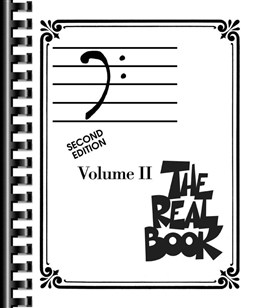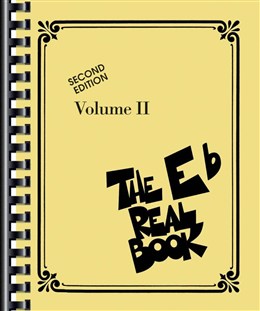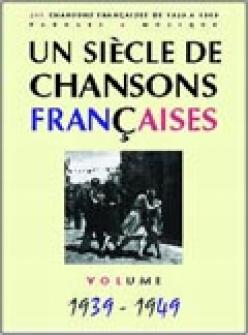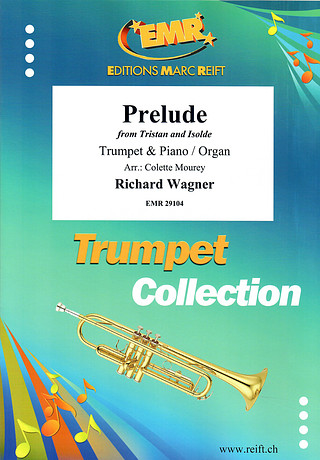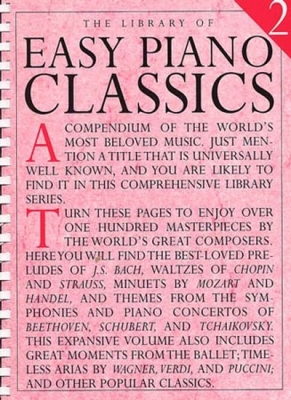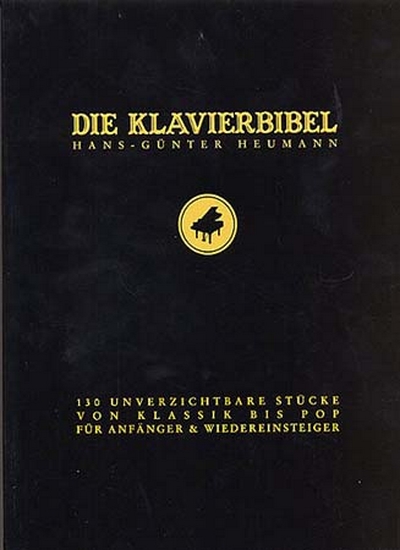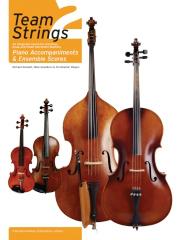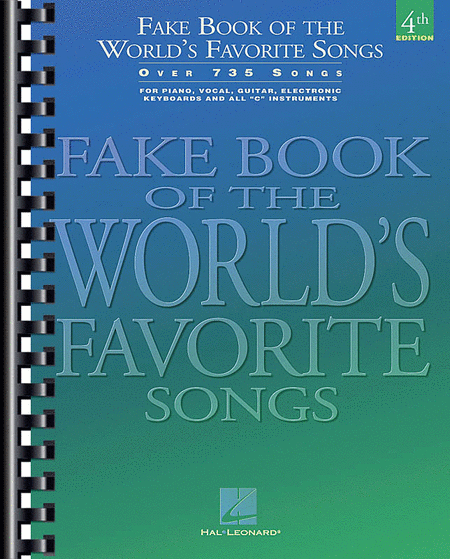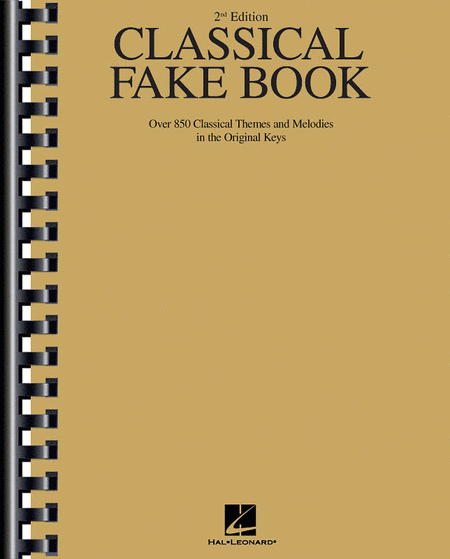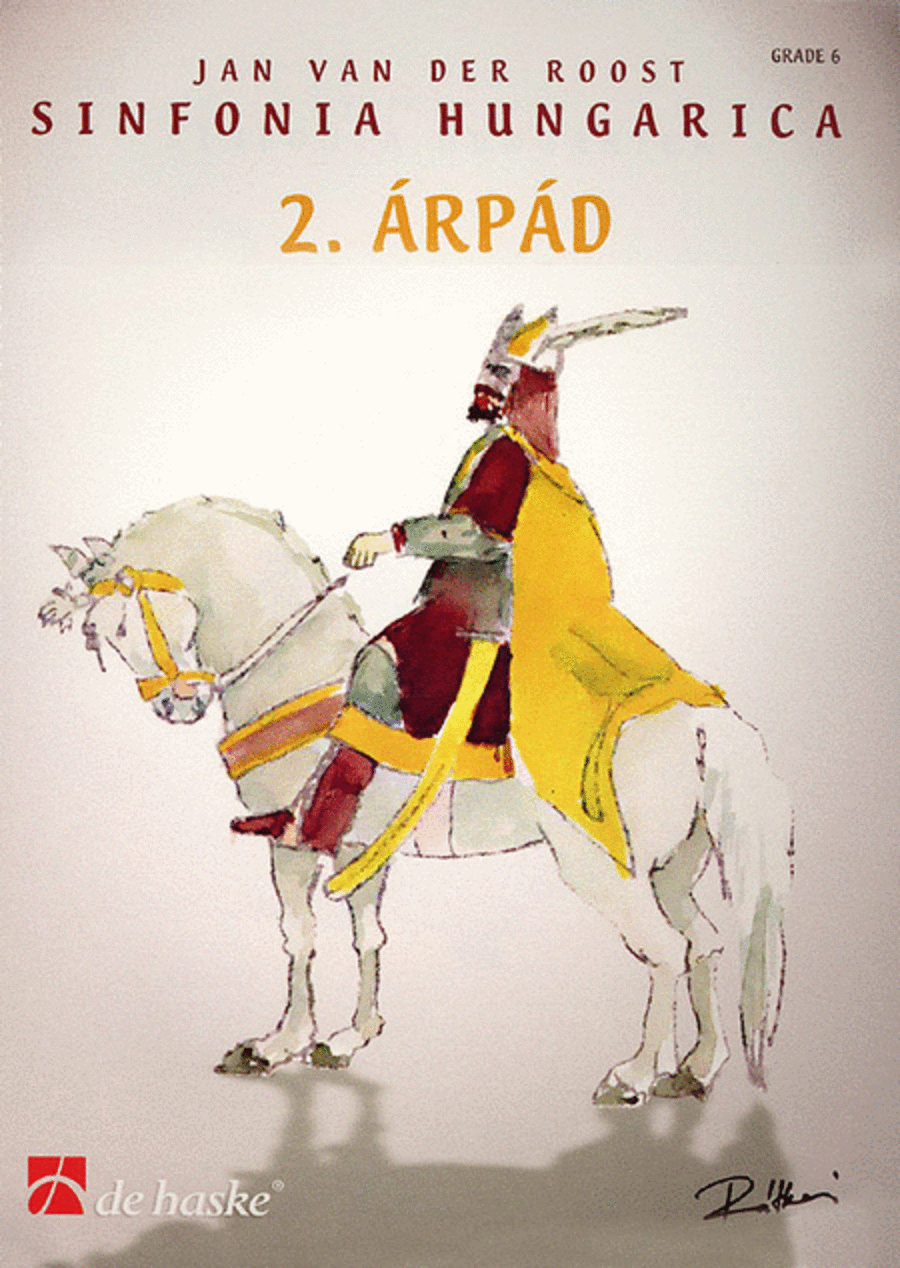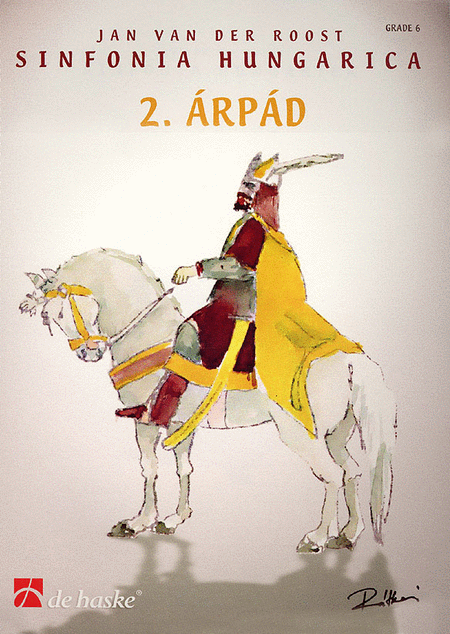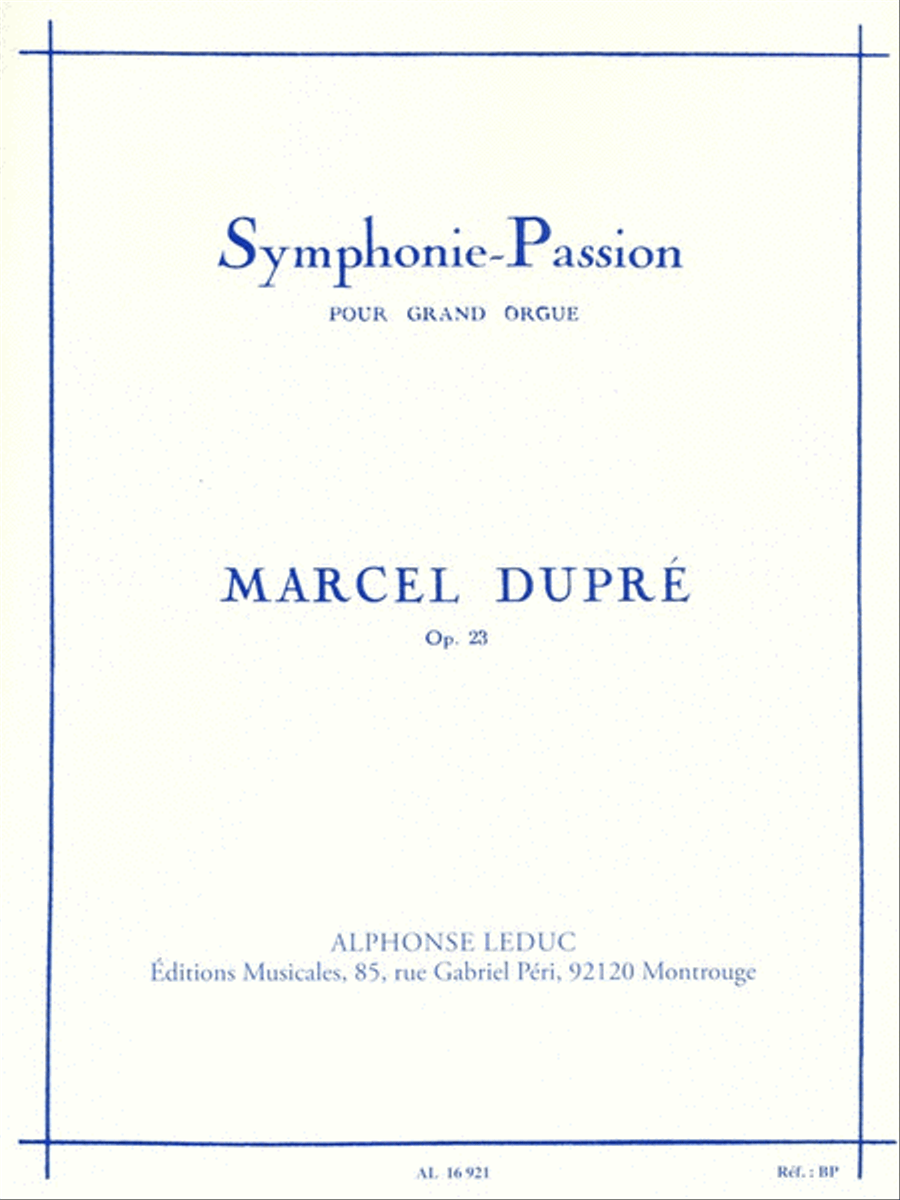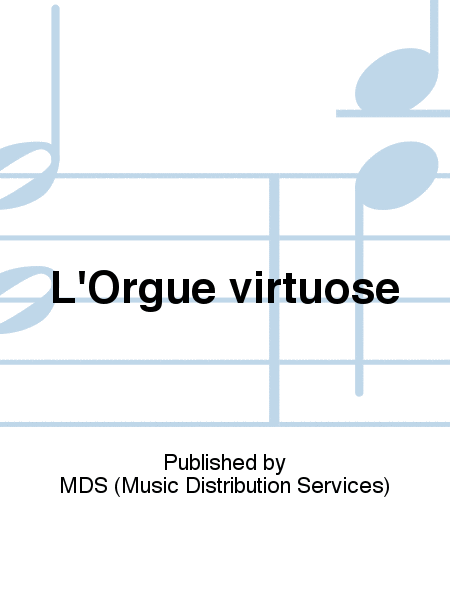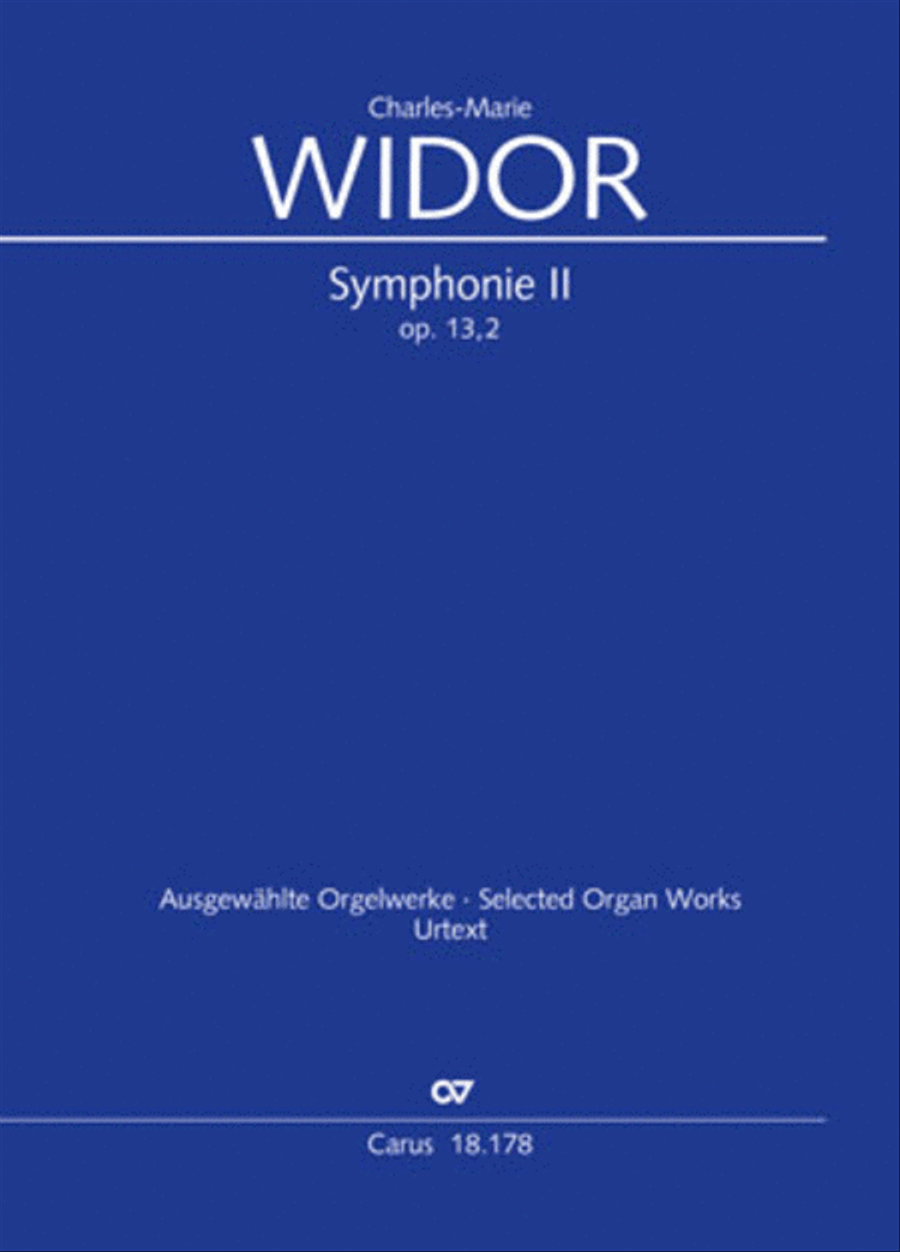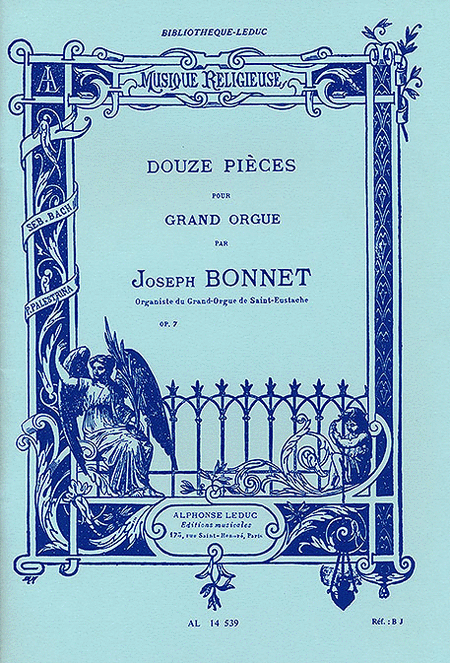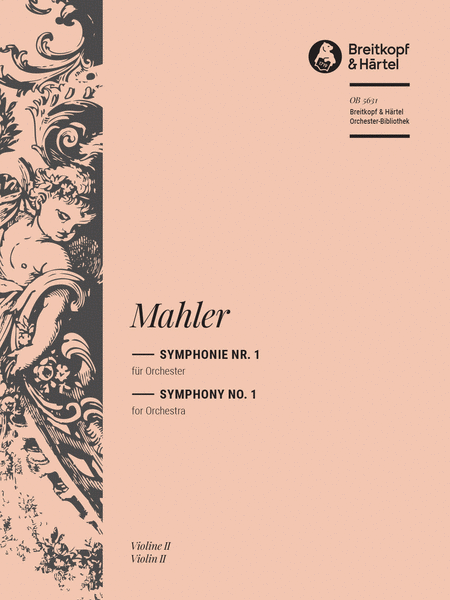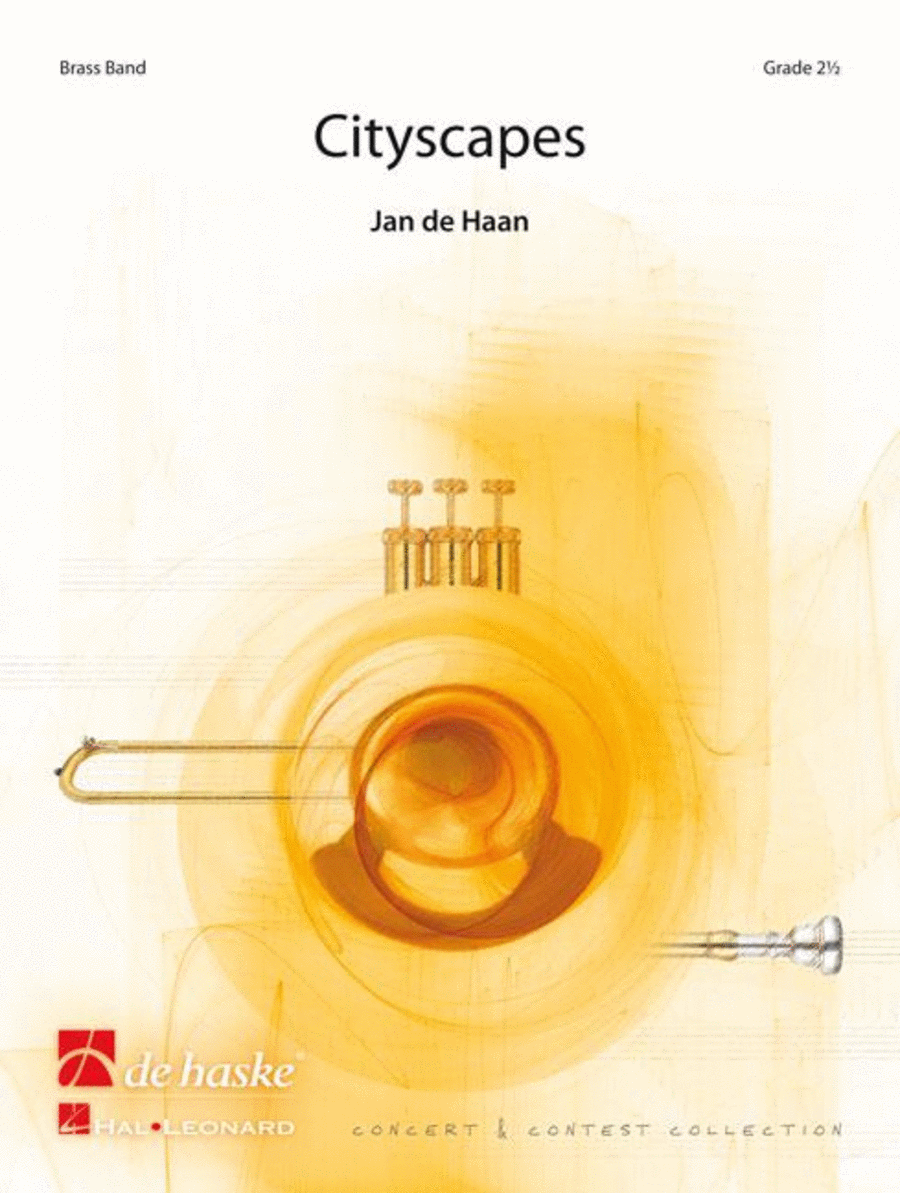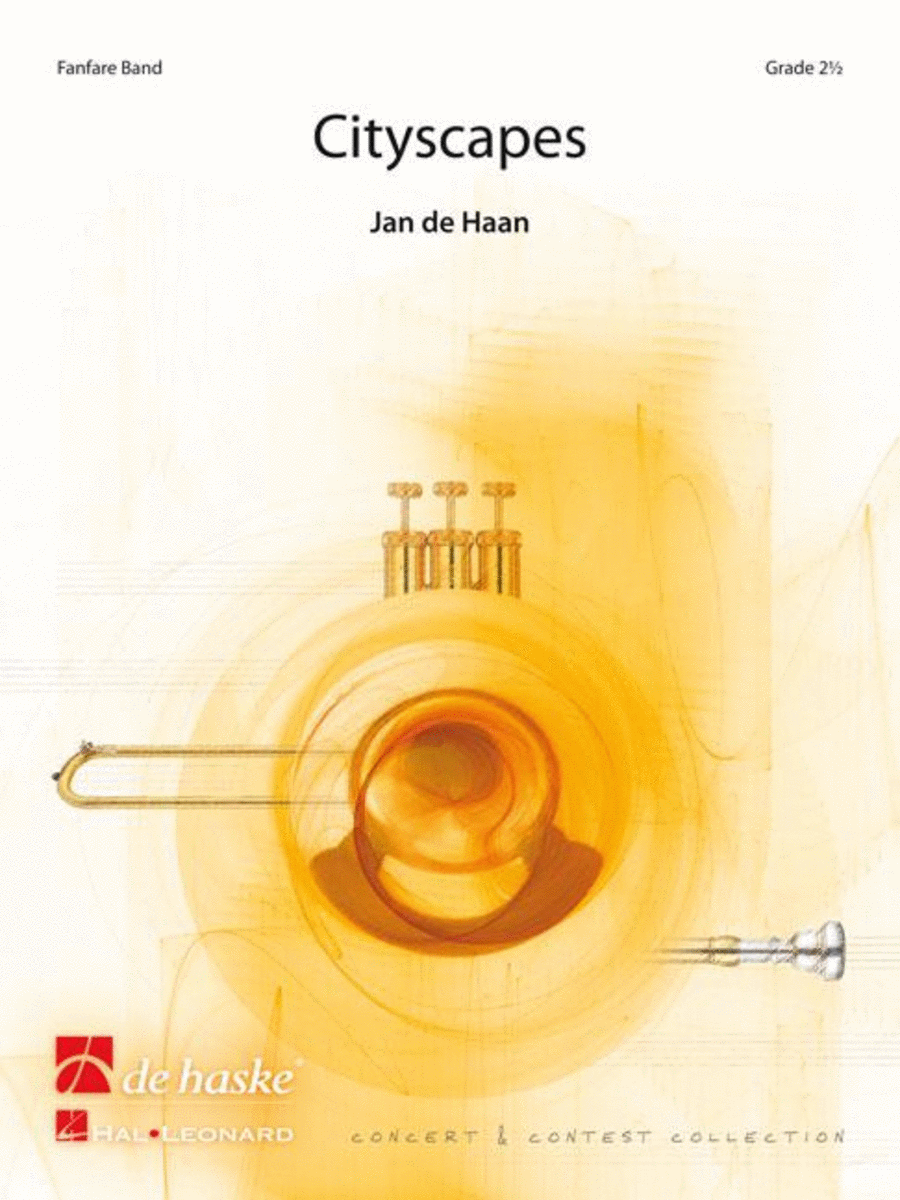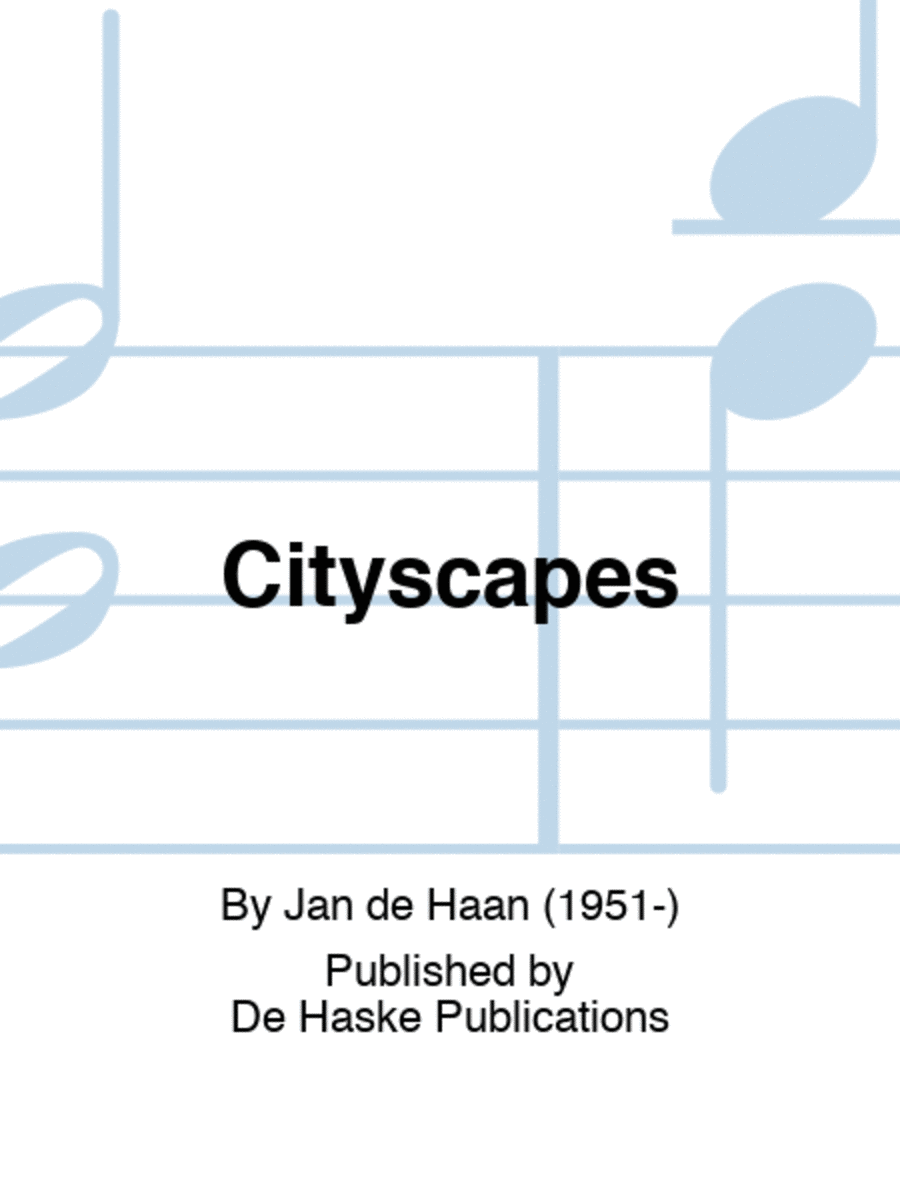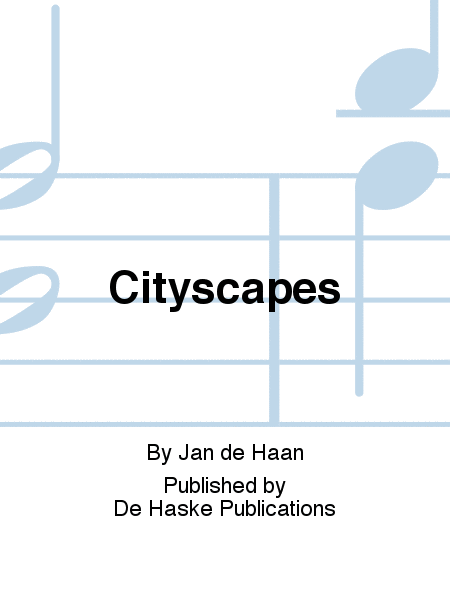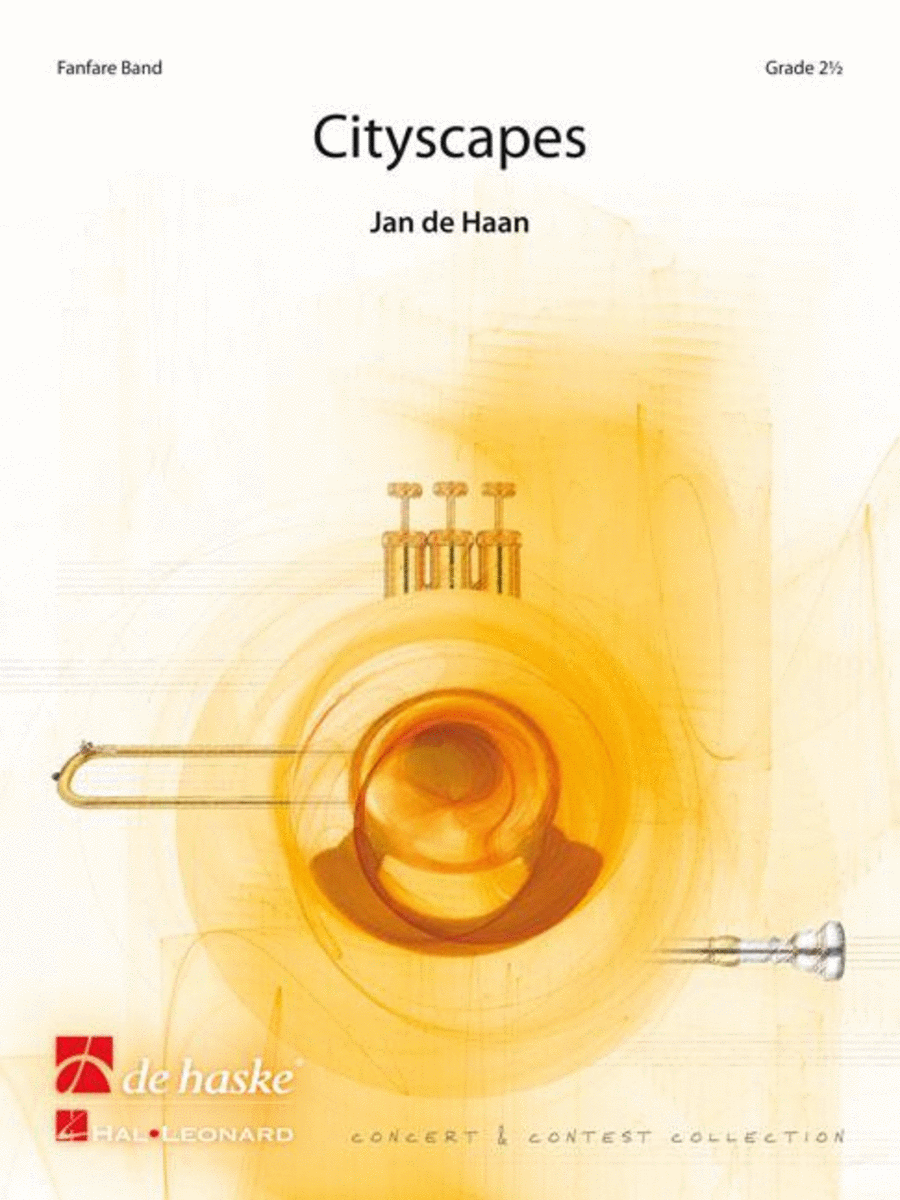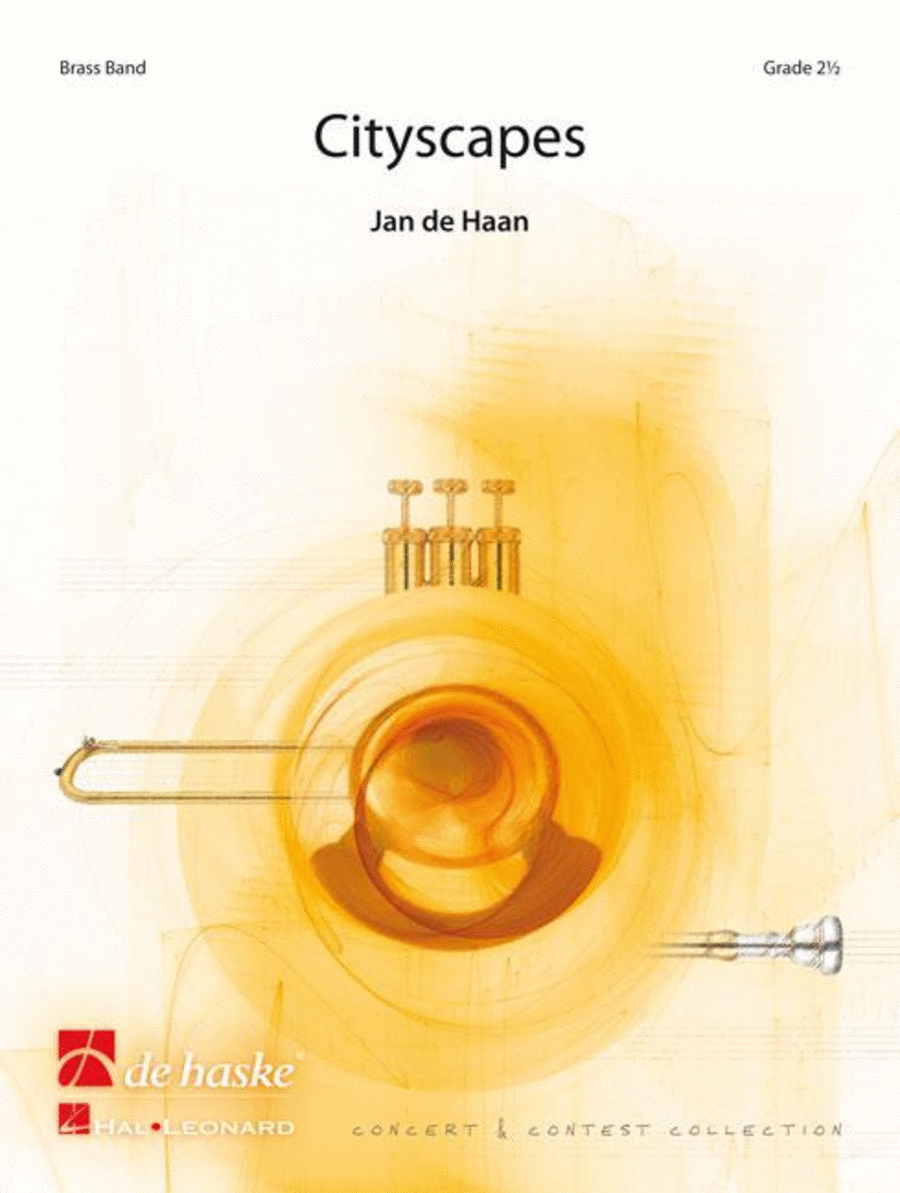|
| The Real Book : Vol.II -
Second Edition - Bass
Clef Instruments
Bass Clef Instruments
Hal Leonard
Le Real Book est une alternative à la pléthore de mal conçus, les volumes ill...(+)
Le Real Book est une alternative à la pléthore de mal conçus, les volumes illisibles, inexactes et mal édités qui abondent sur ??le marché aujourd'hui. Claire et précise, la série Real Book vise à fournir une sélection de musique qui est à la fois facile à lire et agréable à réaliser. Arrangé pour instruments en clé de basse, cette édition de The Real Book: Volume II contient 400 chansons, dont Moon River, Georgia On My Mind, Fly Me To The Moon, Oye Como Va et de nombreux airs les plus connus. / Instruments En Clé de Fa
Délais: 2-5 jours - En Stock Fournisseur | | |
| The Real Book : Vol.II -
Second Edition - E Flat
Instruments
Instruments en Mib [Fake Book]
Hal Leonard
Le Real Book est une alternative à la pléthore de mal conçus, les volumes ill...(+)
Le Real Book est une alternative à la pléthore de mal conçus, les volumes illisibles, inexactes et mal édités qui abondent sur ??le marché aujourd'hui. Claire et précise, la série Real Book vise à fournir une sélection de musique qui est à la fois facile à lire et agréable à réaliser. Arrangé pour E instruments plat, cette édition de The Real Book: Volume II contient 400 chansons, dont Moon River, Georgia On My Mind, Fly Me To The Moon, Oye Como Va et de nombreux airs les plus connus. / Instruments En Mib
Délais: En Stock | | |
| Gliozzi M./ Simon D. -
L'orgue Aux Milles
Saveurs Vol.3
 En Français En Français
Orgue
Editions Buissonnieres
Les claviéristes gourmets se régalent ! Anthologie de pièces pour orgue (ou ...(+)
Les claviéristes gourmets se régalent ! Anthologie de pièces pour orgue (ou clavier) Comprenant une partie méthode pour pédalier, une partie pédagogique sur l'harmonie au clavier, et quelques pièces d'orgue à 4 mains et de musique d'ensemble. Recueil de 360 pages en 2 volumes Format 22,5 x 32 cm, couverture pelliculée Complément : livret relié de parties séparées pour la partie Musiques d'ensemble Ecrit par Marta Gliozzi et Damien Simon, professeurs d'orgue en conservatoire. Notre apprenti-cuisinier-organiste continue à explorer des matériaux musicaux dans divers styles, découvrant les différentes saveurs esthétiques des pays européens : dans ce deuxième volume, les auteurs poursuivent leur démarche pédagogique, en renouvelant l'approche de la formation de l'organiste. Élèves avec professeur, professeurs avec élèves, élèves avec amis, les pièces de musique d'ensemble et les pièces à 4 mains sont pensées pour vous ! Alors, bonne cuisine à tous, avec patience, écoute attentive de soi et de l'autre, rigueur et surtout amour de tout ce que vous faites ! Bonne dégustation ! Dans ce recueil : ' Chansons populaires, Noëls, Chorals. ' Chants grégoriens, mélodies populaires and canons au pédalier. ' Polyphonies : musique anglaise, allemande, espagnole et portugaise, française, italienne. ' Musiques d'aujourd'hui. ' Musique d'ensemble pour orgue et instrument soliste ou chanteur. ' Orgue à 4 mains. ' Au-delà de la musique écrite : harmonie, improvisation, jeux rythmiques pour l'indépendance. 3Dans ce 2e volume, nous poursuivons notre démarche pédagogique en renouvelant l'approche de la formation de l'organiste. Comme dans le premier volume de cette collection, notre apprenti-cuisinier-organiste continuera à explorer les matériaux musicaux des chansons populaires et des noëls. Il se familiarisera avec les thèmes de chorals et de chants grégoriens, fondateurs du répertoire de l'orgue. Il découvrira également les saveurs caractéristiques des esthétiques musicales et organistiques spécifiques des différents pays européens. Pour chacune d'entre elles, nous proposons quelques pistes d'écoute car, pour former le goût de notre organiste, il lui faut se nourrir et écouter bien d'autres pièces que celles qu'il est en train de travailler. La polyphonie est le c'ur et la quintessence du répertoire de l'orgue. C'est pourquoi, nous proposons un ensemble de courtes pièces manualiter puis pedaliter. Le développement de la technique de pédalier se fera tout autant par ces pièces que, dans un premier temps, par le travail approfondi de mélodies pour pédalier solo comme par celui de quelques mesures de canons pour assurer une coordination parfaite entre une main et le pédalier. Nous avons volontairement basé les débuts du jeu de pédale sur une technique favorisant un jeu articulé par l'utilisation en grande partie des pointes. L'usage du talon sera introduit petit à petit De même, nous proposons des doigtés manuels afin de faciliter la tâche de tous. Néanmoins, nous avons pleinement conscience que la morphologie et la taille des mains de chacun puissent rendre certains doigtés que nous proposons inapropriés ou peu commodes. Libre à chacun de les modifier ! La priorité ' et il faut le rappeler aux élèves ' n'est pas le doigté mais la note, la phrase musicale ; le doigté n'est qu'un auxiliaire. Parallèlement à ces esthétiques nationales des siècles passés, nous vous offrons également quelques pièces de compositeurs actuels afin de découvrir d'autres langages harmoniques ! L'ensemble des pièces de cette anthologie peut également constituer un réservoir non négligeable pour l'organiste liturgique. Il y découvrira des pièces faciles d'exécution qui trouveront aisément leur place dans un office. Enfin, si une majeure partie du répertoire de l'orgue est solistique, notre instrument à tuyaux n'en demeure pas moins un partenaire formidable pour l'accompagnement. Aussi, ce recueil propose quelques éléments d'harmonie, amuse-bouches préparatoires à une découverte de la basse continue ainsi que de petits arrangements pour un instrument mélodique et orgue. Élèves avec votre professeur, professeurs avec vos élèves, élèves avec vos amis, les pièces de musique d'ensemble et les pièces à 4 mains ' les organistes peuvent jouer entre-eux ' sont pensées pour vous ! Alors, bonne cuisine à tous, avec patience, écoute attentive de soi et de l'autre, rigueur et surtout amour de tout ce que vous faites !3 Bonne dégustation ! Les auteurs Marta Gliozzi et Damien Simon Table des matières Introduction Le facteur d'orgue et cuisinier Quelques règles d'or Chansons populaires Trois jeunes tambours Arr. Damien Simon J'ai du bon tabac Arr. Damien Simon Le roi Renaud Arr. Marta Gliozzi Noëls Puer nobis nascitur J.-F. Dandrieu Michau qui causoit ce grand bruit J.-F. Dandrieu Chantons je vous prie J.-F. Dandrieu Noëls en tambourin J.-J. Beauvarlet-Charpentier Vom Himmel hoch, da komm ich her F. W. Zachow Noël angevin C. Franck Variations sur Il est né le divin enfant E. Thomas Variation sur Il est né le divin enfant D. Simon Chorals Allein Gott in der Höh sei Ehr J. P. Sweelinck Allein Gott in der Höh sei Ehr G. P. Telemann Herzlich tut mich verlangen J. G. Walther Herzlich tut mich verlangen G. P. Telemann Jesu meine Freude G. P. Telemann Liebster Jesu, wir sind hierJ. G. Walther Chants grégoriens et autres mélodies pour pédalier solo Puer natus Adeste fideles Ecce nomen Domini Emmanuel Victimae paschali laudes Mélodies traditionnelles celtiques : Mélodie traditionnelle de Basse-Bretagne Gwerz Penmarc'h (la complainte de Penmarc'h) Kabiten Sant-Maloï (le capitaone de Saint Malo) Hirvoudou, mélodie traditionnelle écossaise An alarc'h Mélodies traditionnelles juives : Esa Enai Lév Tahor Adir hu Shalom Alèchem Yo m'enamori d'un aire Quelques thèmes célèbres : Air H. Purcell Thème, d'après le Concerto Brandebourgeois n°3 J.-S. Bach Thème extrait de la Symphonie Inachevée F. Schubert Thème extrait de la Symphonie n°3 J. Brahms Thème extrait du Lac des cygnes P. I. Tchaïkovski Canons à une main and pédalier Canons 1 and 2 Traditionnels Canon à la quinte G. P. Palestrina Dona nobis pacem attribué à W. A. Mozart Canon J. P. Sweelinck O Flamme M. Praetorius Canon F. Schubert Se alla festa Traditionnel italien Manualiter : un peu de vélocité et d'agilité Allegro D. Zipoli Klavierstück für die rechte oder linke Hand allein C. Ph. E. Bach Solfeggio C. Ph. E. Bach Praeambulum et Versus in D J. A. Kobrich Vorspiel in B Anonyme, Salzburger Orgelbuch Praeludium in F J. Krieger Allegro E. Gigout Allegro vivace E. Gigout Musique anglaise des xvie, XVII et XVIIIe siècles Prelude H. Purcell Extrait de Voluntary in C J. C. Pepush Pavan, the Earle of Salisbury W. Byrd Prelude J. Blow Prelude in the eight mode J. Bull Voluntary in AJ. Stanley Voluntary in G G. Berg Siciliana W. Walond Musique allemande des XVIIe et XVIIIe siècles Prelude J.-S. Bach Fuga prima J. C. F. Fischer Fuga sexta J. C. F. Fischer Fuga tertia J. C. F. Fischer Finale J. C. F. Fischer Praeambulum et fuga in h J. B. Peyer Praeambulum in f J. B. Peyer Praeambulum et fuga in E J. B. Peyer Praeambulum et fuga in Es J. B. Peyer Praeambulum in e / IV ton J. X. Nauß Praeludium in g J. Krieger Vorspiel in A Anonyme, Salzburger Orgelbuch Fuga a 3 L. van Beethoven Musique espagnole et portugaise Fantasia T. de Santa Maria Dic nobis, Maria A. de Cabezón A duo, del poner obras en el Monacordio T. de Santa Maria Romance : Paseàbase el rey-moro F. F. Palero Romance V : Para quien crie yo cabellos A. de Cabezón Versos del sexto tono A. de Cabezón Ligaduras de 3° tono, para la Elevaciòn Anonimo, Juan Cabanilles ' Toccata C. Seixas Musique française du XVII au XIXe siècle Chantons, je vous prie J.-F. Dandrieu Feste sauvage M. Corrette Rondeau M. Corrette Offertoire II, la St Benoist M. Corrette Musette, Suite du Ier ton M. Corrette Récit de nazar, Suite du Ier ton M. Corrette Grand jeu, Suite du 2e ton M. Corrette Ha voisin, quelle nouvelle J.-N. Geoffroy Basse de Cromorne L.-N. Clérambault Extrait de L'organiste C. Franck Petites fleurs musicales : Dominica Resurrectionis Ch. Tournemire mmaculata Conceptio Ch. Tournemire Festum Omnium Sanctorum Ch. Tournemire Heures mystiques : Andante L. Boëllmann Heures mystiques : Lento L. Boëllmann Heures mystiques : Andantino ma non troppo L. Boëllmann Heures mystiques : Allegro marcato L. Boëllmann Verset L. Boëllmann Musique italienne Fiori musicali : Kyrie alio modo G. Frescobaldi Fiori musicali : Kyrie alio modo G. Frescobaldi Fughetta A. Scarlatti Folia A. Scarlatti Partita D. Zipoli Ritirada del emperador de los Dominicos de España D. Zipoli Sarabanda, Suite II in sol minore D. Zipoli Due versetti G. Pera Pédaliter Übungen im Pedalspiele G. A. Merkel Cantabile J.-N. Lemmens Finale J. C. F. Fischer Toccata in G Minor J. Ch. Pachebel Praeludium et fuga ex F-Dur J. C. Simon Praeludium in Fa per organo pleno J. L. Krebs Pastorale D. Zipoli Toccata [en Sol] G. B. Martini Toccata [en Sib] G. B. Martini Versetti in re minore P. B. Bellinzani Versetti in re minore : Larghetto P. B. Bellinzani Versetti in re minore : Largo P. B. Bellinzani Elevation in E minor A. Guilmant Offertoire Ch. Tournemire Gnossienne n°2 E. Satie 1ère gymnopédie E. Satie Musiques d'aujourd'hui Deux pièces manuelle pour orgue : I-Offertoire en duo à deux clavier P. Reber II- Aria P. Reber Canzone à 3 voix P. Reber Danse laudative P. Reber Let silence talk to you H. Lesvenan Destination H. Lesvenan Happiness is your birthright H. Lesvenan The heart sees deeper than eyes H. Lesvenan Mystère H. Lesvenan Musiques d'ensemble Lauda Natalizia Padre F. Soto Il Ballerino G. G. Gastoldi Il Risentito G. G. Gastoldi Maledetto sia l'aspetto, Scherzi musicali C. Monteverdi Et incarnatus est J. Cererols Change thy mind since she doth change R. Martin Shewes ans nightly revels T. Lupo Gavotte F. Barsanti Menuet F. Barsanti Menuet J. C. F. Fischer Pauls Steeple, Variations sur un Passamezzo Antico Anonyme anglais, XVIIIe s. Son questi i crespi, canzonette C. Monteverdi When Phoebus first did Daphne love J. Dowland Gavotte G. B. Martini Fuga W. A. Mozart L'alphabet W. A. Mozart Due pupille amabili (extrait des 6 nocturnes) W. A. Mozart Adagio W. A. Mozart Menuet J. Haydn Menuet F. Schubert Mich zieht es nach dem Dörfchen R. Schumann Meneham H. Lesvenan BerceuseTraditionnel russe, Arr. H. Lesvenan Orgue à 4 mains Suite de danses : Bransle de Champaigne C. Gervaise Pavane Passemaize C. Gervaise Bransle : Je fille quant Dieu C. Gervaise Come again J. Dowland La, la, la, je ne l'ose dire P. Certon O Bethlehem Anonyme anglais, XVIe s. Ach wie flüchtig, ach wie nichtig J. S. Bach Au-delà de la musique écrite Harmonie Improvisation sur le Canon de Pachelbel Jeux rythmiques et d'indépendance Et encore... Historique and fonctionnement Tableau de travail Marta Gliozzi and Damien Simon
Délais: Sur commande | | |
| Un Siècle De
Chansons
Françaises
1939-1949
 En Français En Français
Ligne De Mélodie, (Paroles) et
Accords [Partition] - Facile
CSDEM
8 volumes allant de la fin du XIXe siècle aux années 1980. 301 chansons par vo...(+)
8 volumes allant de la fin du XIXe siècle aux années 1980. 301 chansons par volume, pour tout musicien (ligne mélodique, accords, paroles). Une présentation soignée : reliure cartonnée, spirale intérieure.
Editions CSDEM / Piano/Vocal/Guitare (PVG) / Partition
Délais: En Stock | | |
| Symphonie no 1, en
ré majeur (GOUNOD
CHARLES)
2 Flûtes, 2 Hautbois, 2
Clarinettes, 2 Bassons, 2
Symétrie
Par GOUNOD CHARLES. Face à l’évolution de la symphonie impulsée par Beethov...(+)
Par GOUNOD CHARLES. Face à l’évolution de la symphonie impulsée par Beethoven au début du xixe siècle, nombreux furent les compositeurs à se détourner de ce genre considérant ses neuf symphonies comme un idéal insurpassable. Les plus audacieux associeront un contenu extra-musical (poème, texte, conte, légende…) pour faire évoluer le genre vers la symphonie à programme (Berlioz, La Symphonie Fantastique en 1830) ou vers le poème symphonique (Liszt, Mazeppa en 1851). Malgré le creux apparent de la production symphonique française entre 1830 et 1860, il faut souligner que la symphonie, bien que subissant un certain désintérêt, n’a pas cessé d’exister. Farrenc, Reber, Bizet et Gounod par exemple sont de ceux à s’être penchés sur le genre symphonique dans l’héritage beethovénien sans pour autant avoir cherché à le développer outre mesure.
Cette Première Symphonie, datant de 1855, semble être l’un des premiers succès consolateurs de Gounod après l’échec de ses deux œuvres lyriques, La Nonne sanglante et Sapho. Sa bonne réception incite d’ailleurs le compositeur à écrire sa Deuxième Symphonie comme il le dit lui- même au travers de ses Mémoires d’un artiste :
« Je me consolai de mon déboire en écrivant une symphonie (no 1, en ré) pour la Société des Jeunes artistes, qui venait d’être fondée par Pasdeloup et dont tous les concerts avaient lieu salle Herz, rue de la Victoire. Cette symphonie fut bien accueillie, et cet accueil me décida à en écrire pour la même société, une seconde (no 2, en mi bémol), qui obtint aussi un certain succès. »
Ces deux œuvres montrent des traits similaires comme la découpe traditionnelle en quatre mouvements ou encore l’effectif instrumental. Pour autant, la Première Symphonie ne mérite pas de s’éclipser devant la seconde composée la même année. Elle déploie une qualité mélodique remarquable dans son premier mouvement. Le travail orchestral et l’énergie poignante du compositeur laissent également entrevoir le caractère théâtral qu’il développera dans sa Deuxième Symphonie et ses opéras. Le deuxième mouvement emprunte sans doute son caractère et son inspiration au second mouvement de la Septième Symphonie de Beethoven. Gounod fait preuve ici d’une grande finesse orchestrale et d’une certaine sobriété, proposant même un passage fugué. Le Scherzo, quant à lui, semble puiser son énergie dans de multiples contrastes, somme toute opératiques. Il souligne avec fluidité l’intérêt marqué du compositeur pour le genre dramatique. Le quatrième mouvement, commençant par une introduction dans un tempo plus lent, ne manque pas de dévoiler son infatigable vivacité. Gounod n’hésite d’ailleurs pas à déployer l’intégralité de l’orchestre lorsque nécessaire.
Fidèle au modèle classique et assurément différente de sa sœur, cette Première Symphonie, d’une énergie remarquable, mérite une écoute attentive afin d’en saisir toutes les richesses.
Sommaire
I. Allegro molto
II. Allegretto moderato
III. Non troppo presto
IV. Adagio
/ Date parution : 2022-02-15/ Répertoire / 2 Flûtes, 2 Hautbois, 2 Clarinettes, 2 Bassons, 2
Délais: 2-5 jours - En Stock Fournisseur | | |
| Ipe Music Piano Scores -
630 Partitions Pour Piano
Sur Dvd-rom
 En Français En Français
Piano seul
IPE Music
TÉLÉCHARGEZ GRATUITEMENT LA DÉMO ECOLES DE MUSIQUE, CONSERVATOIRES, MEDIAT...(+)
TÉLÉCHARGEZ GRATUITEMENT LA DÉMO ECOLES DE MUSIQUE, CONSERVATOIRES, MEDIATHEQUES, ETABLISSEMENTS SCOLAIRES, PROFESSEURS DE PIANO, PIANISTES DEBUTANTS OU CONFIRMES, CONCERTISTES, DÉSORMAIS, VOUS POUVEZ IMPRIMER, UTILISER ET FAIRE CIRCULER LIBREMENT UN GRAND RÉPERTOIRE DE PARTITIONS SANS QUE CE SOIT CONSIDÉRÉ COMME UNE PHOTOCOPIE POUR LES COURS, LES EXAMENS, LES AUDITIONS, LES CONCERTS, LE TRAVAIL CHEZ SOI' VOICI POUR LA PREMIÈRE FOIS' ET POUR 59' TTC SEULEMENT SUR UN SEUL DVD-ROM, LE PLUS GRAND RÉPERTOIRE DE PARTITIONS POUR PIANO LIBRE DE DROIT ET SANS RESTRICTIONS * 630 OEUVRES MAJEURES DOIGTÉES AVEC SOIN ET CLASSÉES PAR NIVEAU DE DIFFICULTÉ * 2 500 PAGES DE MUSIQUE À IMPRIMER DANS UNE QUALITÉ IRRÉPROCHABLE * 26 HEURES D'ÉCOUTE AU FORMAT MP3 À EXPORTER ET À UTILISER SANS LIMITATION BABELL, BACH, BEETHOVEN, BIZET, BOCCHERINI, BURGMULLER, CHOPIN, CLEMENTI, CORELLI, COUPERIN, CZERNY, DAQUIN, DEBUSSY, DIABELLI, FRANCK, GLUCK, GOUNOD, GRAUPNER, GURLITT, HAENDEL, HASSE, HAYDN, HÄSSLER, JOPLIN, KREBS, KRIEGER, LULLY, MARTINI, MASSENET, MENDELSSOHN, MOZART, PACHELBEL, PETZOLD, PURCELL, RAMEAU, SCARLATTI, SCHUBERT, SCHUMANN, STRAUSS, TCHAIKOVSKI, TELEMANN, TÜRK. QUELQUES EXEMPLES D'UTILISATION : * INSTALLÉ DANS UNE SALLE DE COURS, CHAQUE PROFESSEUR AURA LE LOISIR DE FAIRE ÉCOUTER À SON ÉLÈVE CHAQUE MORCEAU ENREGISTRÉ PAR DES PIANISTES VIRTUOSES. PUIS LE PROFESSEUR IMPRIMERA NATURELLEMENT LA PARTITION QUE L'ÉLÈVE EMPORTERA AVEC LUI POUR TRAVAILLER À LA MAISON. * POUR LES COURS DE MUSIQUE COLLECTIFS, COURS D'INITIATION DANS LES ECOLES PRIMAIRES, COLLÈGES, LYCÉES, CONSERVATOIRES', UNE SOLUTION LUDIQUE ET INÉPUISABLE POUR FAIRE DÉCOUVRIR LA MUSIQUE DES GRANDS COMPOSITEURS. LE PROFESSEUR IMPRIME POUR CHAQUE ÉLÈVE LA PARTITION QU'IL AURA CHOISI DE FAIRE TRAVAILLER, DÉCHIFFRER, EXPLIQUER, AVEC L'AIDE DE L'AUDIO. * QUOI QU'IL EN SOIT, MÊME POUR LES BIBLIOTHÈQUES, VOUS DISPOSEZ D'UN RÉPERTOIRE COMPLET À IMPRIMERÀ L'INFINI SANS QUE CE SOIT CONSIDÉRÉ COMME DU « PHOTOCOPILLAGE » PUISQUE LES OEUVRES CONTENUES DANS PIANO SCORE UNLIMITED APPARTIENNENT AU DOMAINE PUBLIC. * IMPRIMEZ DES PARTITIONS D'UNE QUALITÉ GRAPHIQUE EXCEPTIONNELLE ! DOIGTÉE AVEC SOIN, CHAQUE PARTITION EST TIRÉE DE LA PREMIÈRE ÉDITION OU DE L'OEUVRE ORIGINALE DU COMPOSITEUR. POUR VOUS AIDER DANS VOS CHOIX, LES PIÈCES ONT ÉTÉ CLASSÉES PAR COMPOSITEUR ET PAR NIVEAU DE DIFFICULTÉ. * EXPORTEZ LE FICHIER MP3 QUI A ÉTÉ INTERPRÉTÉ PAR DES PIANISTES VIRTUOSES POUR L'UTILISER SANS RESTRICTION ET LIBRE DE DROIT, AGRÉMENTER VOS DVD, ÉLABORER DES PROGRAMMES D'ÉCOUTE POUR VOS ÉLÈVES OU VOUS-MÊME... AVEC PIANO SCORES UNLIMITED' * DÉBUTEZ EN TRAVAILLANT LES EXERCICES DU RECUEIL « LE PREMIER MAÎTRE DU PIANO OPUS 599 », « LES CINQ DOIGTS OPUS 777 », « LES ETUDES » DE CZERNY OU DE BURGMULLER, LE CÉLÈBRE « PETIT LIVRE » D'ANNA MAGDALENA BACH' * DÉCHIFFREZ LES PARTITIONS DE L'INCONTOURNABLE RÉPERTOIRE DE PIANO : « LE CLAVECIN BIEN TEMPÉRÉ » DE JS BACH OU LES « SONATINES » DE CLÉMENTI ' * INTERPRÉTEZ LES « NOCTURNES », « PRÉLUDES », « MAZURKAS »,GRANDES « VALSES » DE CHOPIN, LES AIRS LES PLUS CONNUS (« FANTAISIE », « MARCHE TURQUE », « PETITE SONATE ) ET SONATES DE MOZART, LES « PETITS PRÉLUDES » OU LES FAMEUSES « FUGUES », LES « INVENTIONS À 2 ET 3 VOIES » DE J.S.BACH, LES « ROMANCES SANS PAROLES » DE MENDELSSOHN, L' « ALBUM POUR LA JEUNESSE », « SCÈNES D'ENFANTS » DE SCHUMANN, LES « MOMENTS MUSICAUX », LES « IMPROMPTUS » DE SCHUBERT, « LES ARABESQUES », LE « CHILDREN'S CORNER » ,« LE PETIT NÈGRE» DE DEBUSSY, LES « RAGTIMES » DE SCOTT JOPLIN, POUR NE CITER QU'EUX... DE HAENDEL, SCHUBERT, BEETHOVEN, EN PASSANT ENTRE AUTRES PAR TCHAÏKOVSKI OU PURCELL, COUPERIN, GOUNOD, SCARLATTI'. LISTE DES TITRES : BABEL WILLIAM RIGAUDON EN LA MINEUR. BACH ANNA MAGDALENA PETIT LIVRE D'ANNA-MAGDALENA BACH. BACH CARL PHILIPP EMANUEL SOLFEGGIETTO, SOLO PER IL CEMBALO, MARCHES, POLONAISES. BACH JOHANN CHRISTIAN MENUET EN DO MAJEUR. BACH JOHANN SEBASTIAN PETITS PRÉLUDES POUR LES COMMENÇANTS, INTÉGRALITÉ DES PETITS PRÉLUDES ET FUGUES, INTÉGRALITÉ DES INVENTIONS À 2 ET 3 VOIX BWV 772 ' 801, INTÉGRALITÉ DU CLAVECIN BIEN TEMPÉRÉ LIVRE 1, ARIAS BWV 515 ET BWV 988, CHORAL EN LA MINEUR BWV 691, FUGHETTA N° 1 BWV 961, GAVOTTE EN FA MAJEUR BWV 131, MENUET EN RÉ MINEUR BWV 132. BEETHOVEN LUDWIG VAN 6 ECOSSAISES WOO 83, INTÉGRALITÉ DES BAGATELLES, CONTREDANSE EN LA MAJEUR, DANSES ALLEMANDES, DANSES VILLAGEOISES N° 1 ET 2, ECOSSAISE EN SOL MAJEUR WOO 23, LETTRE POUR ELISE, MARCHE FUNÈBRE, RONDO N° 1 EN DO MAJEUR OPUS 51, RONDO A CAPRICCIO OPUS 129, SONATES : N° 1 OPUS 2 N° 1, N° 14 OPUS 27 N° 2 « CLAIR DE LUNE » , N° 2 OPUS 2 N° 2, N° 20 OPUS 49 N° 2 « FACILE », N° 25 OPUS 79, N° 8 OPUS 13 « PATHÉTIQUE », SONATINES : N° 1 À 4, VALSES N° 1 « LE DÉSIR » À 6. BIZET GEORGES CARMEN : « CHANSON BOHÊME », « CORTÈGE DES TORÉADORS », « HABANERA », « OUVERTURE ». BOCCHERINI LUIGI CÉLÈBRE MENUET. BURGMÜLLER FRIEDRICH INTÉGRALITÉ DES ETUDES FACILES OPUS 100. CHOPIN FRÉDÉRIC INTÉGRALITÉ DES VALSES, MAZURKAS, NOCTURNES ET PRÉLUDES. CLEMENTI MUZIO SONATINES OPUS 36 : N° 1 À 6. CORELLI ARCANGELO GAVOTTE EN FA ET EN MI MAJEUR, SARABANDES. COUPERIN FRANÇOIS RONDEAU « LES BERGERIES », LE PETIT RIEN. CZERNY CARL BERCEUSE. INTÉGRALITÉ DU PREMIER MAÎTRE DU PIANO OPUS 599 : ETUDE PRÉLIMINAIRE N° 1 À 10 POUR APPRENDRE LES NOTES. EXERCICES POUR LES 5 DOIGTS, LES MAINS TRANQUILLES N° 11 À 18. EXERCICES POUR LE PASSAGE DU POUCE N° 19 À 31. EXERCICES EN CLÉ DE SOL ET FA N° 32 À 35. INTÉGRALITÉ DES CINQ DOIGTS OPUS 777, EXERCICES SUR LES 5 NOTES : N° 1 À 24. LE PLUS GRAND RÉPERTOIRE DE PARTITIONS POUR PIANO PARMI LES OEUVRES LES PLUS JOUÉES CONTENUES SUR UN SEUL DVD-ROM À IMPRIMER OU À UTILISER EN AUDIO LIBRE DE DROIT ET SANS RESTRICTIONS. DAQUIN LOUIS-CLAUDE RONDEAUX « L'HIRONDELLE » ET « LE COUCOU ». DEBUSSY CLAUDE 1ÈRE ET 2ÈME ARABESQUE, CLAIR DE LUNE, INTÉGRALITÉ DU CHILDREN'S CORNER, EPIGRAPHE ANTIQUE N° 1 À 6, THE LITTLE NEGRO CAKE WALK, VALSE « LA PLUS QUE LENTE ». DIABELLI ANTON SONATINES OPUS 151 N° 1 À 4. FRANCK CÉSAR LES PLAINTES D'UNE POUPÉE EN SOL MAJEUR. GLUCK AIR D'ORFÉO TRANSCRIPTION POUR PIANO. GOUNOD CHARLES AVE MARIA TRANSCRIPTION POUR PIANO. GRAUPNER CHRISTOPH BOURRÉE EN RÉ MINEUR, GAVOTTE EN SOL MAJEUR. GURLITT NOVELETTE EN RÉ MINEUR. HAENDEL GEORGES FRÉDÉRIC BOURRÉE EN SOL MAJEUR, LARGO EXTRAIT DE L'OPÉRA « XERXÈS », MENUET EN LA MINEUR, PASSACAILLE VARIÉE EN SOL MINEUR, PASSEPIED EN DO MAJEUR, PRÉLUDE EN SOL MAJEUR, SARABANDES EXTRAIT DE LA XIE SUITE ET RÉ MINEUR. HASSE J.-A. POLONAISE EN SOL MAJEUR. HAYDN JOSEPH DANSES ALLEMANDES N° 1 10/1, N° 5 N° 10/5, N° 6 N° 10/6, N° 9 N° 10/9, DE BONNE HUMEUR EN SOL MAJEUR, SCHERZO EN FA MAJEUR. HÄSSLER JOHANN WILHELM MENUETS EN DO MAJEUR. JOPLIN SCOTT A BREEZE FROM ALABAMA MARCH AND TWO STEP, COUNTRY CLUB RAGTIME TWO STEP, ELITE SYNCOPATIONS, EUGENIA, MAPLE LEAF RAG, PALM LEAF RAG, PEACHERINE RAG, SWIPESY CAKE WALK, SOMETHING DOING, RAGTIME TWO STEP, SUGAR CANE RAGTIME TWO STEP, SUN FLOWER SLOW DRAG RAGTIME TWO STEP, THE CASCADES, THE CHRYSANTHEMUM, THE EASY WINNERS RAGTIME TWO STEP, THE ENTERTAINER RAGTIME TWO STEP, THE FAVORITE RAGTIME TWO STEP, THE NONPAREIL A RAG and TWO STEP, THE RAGTIME DANCE A STOP, THE SYCAMORE A CONCERT RAG, WALL STREET RAG, WEEPING WILLOW RAGTIME TWO STEP. KREBS JOHANN LUDWIG RIGAUDON EN RÉ MAJEUR. KRIEGER JOHANN BOURRÉE EN LA MINEUR, MENUET EN LA MINEUR. LULLY JEAN-BAPTISTE MENUETS EN RÉ MAJEUR ET RÉ MINEUR. MARTINI JOHANN PLAISIR D'AMOUR ROMANCE POUR PIANO. MASSENET JULES MÉDITATION DE « THAIS » TRANSCRIT POUR PIANO. MENDELSSOHN FÉLIX MARCHE NUPTIALE, INTÉGRALITÉ DES ROMANCES SANS PAROLES, RONDO CAPRICCIOSO OPUS 14, INTÉGRALITÉ DES SCÈNES ENFANTINES OPUS 72 N° 1 À 7. MOZART LEOPOLD BURLESQUE EN SOL MAJEUR, MENUETS EN DO MAJEUR ET EN RÉ MINEUR. MOZART WOLFGANG AMADEUS « AH ! VOUS DIRAI-JE, MAMAN » THÈME ET VARIATIONS KV 265. ALLEGRETTO EN FA MAJEUR. ALLEGRO KV 15A COMPOSÉ EN 1765 ET KV 3. ANDANTE KV 15R. ANDANTINO EN DO MAJEUR KV 15B. AIR DE « LA FLÛTE ENCHANTÉE » : CHANSON DE L'OISELEUR TRANSCRIT POUR PIANO. CONTREDANSES KV 15 L COMPOSÉ EN 1764 ET KV 15E COMPOSÉ EN 1764. FANTAISIE KV 475 ET KV 397. LA TARTINE DE BEURRE VALSE À 1 DOIGT. LÄNDLER N° 6 EN SI B MAJEUR. MARCHE TURQUE. MENUETS : KV 6, KV 2, KV 4, KV 5, KV 15FF, KV 7, KV 15PP, KV 15C. PETITE SONATE EN DO MAJEUR. RONDEAU KV 15HH. SONATE FACILE N° 16 KV 545. SONATES N° 1 KV 279, N° 10 KV 330, N° 11 KV 331 (INCLUS « MARCHE TURQUE «), N° 12 KV 332, N° 2 KV 280, N° 3 KV 281, N° 4 KV 282, N° 7 KV 309, N° 9 KV 310. SYMPHONIE N° 40 TRANSCRITE POUR PIANO (1ER MOUVEMENT). VALSES : FAVORITE EN SOL MAJEUR ET LENTE POUR PIANO. AIR DES « NOCES DE FIGARO » : VOI CHE SAPETE SIMPLIFIÉE ET TRANSCRIT POUR PIANO. PACHELBEL JOHANN BOURRÉE EN SI B MAJEUR, SARABANDE EN SI B MAJEUR ET EN EN FA # MINEUR. PETZOLD CHRISTIAN MENUETS BWV 114 ET BWV 115. PURCELL HENRY AIR EN RÉ MAJEUR, MENUETS EN RÉ MAJEUR ET EN LA MINEUR. RAMEAU JEAN - PHILIPPE LE TAMBOURIN, MENUET EN DO MAJEUR. SCARLATTI DOMENICO SONATES N° 1 K1 L366, N° 2 K9 L413, N° 3 K98 L325, N° 4 K96 L465, N° 5 K113 L345. SCHUBERT FRANZ AVE MARIA OPUS 52 : N° 6 TRANSCRIT POUR PIANO ET POUR CHANT ET PIANO. DANSES ALLEMANDES OPUS 33 D 783 : N° 5 À 7, N° 10. DANSES N° 1 À 4. ECOSSAISES D 529 N° 6 ET 7. IMPROMPTUS OPUS 90 D 899 : N° 1 À 4. IMPROMPTUS OPUS POSTH. 142. D 935 : N° 1 À 4. LA TRUITE TRANSCRIT POUR PIANO. LÄNDLER N° 4 OPUS 67 D 734. 6 MOMENTS MUSICAUX OPUS 94 « : N° 1 À 6. SÉRÉNADE TRANSCRIT POUR PIANO. VALSE NOBLE D 969 N° 10 OPUS 77 ET N° 11. VALSE OPUS 18 D 145 : N° 5 ET N° 6. VALSE SENTIMENTALE OPUS 50 D 779 N° 1 ET N° 13. SCHUMANN ROBERT INTÉGRALITÉ DE L'ALBUM POUR LA JEUNESSE OPUS 68, INTÉGRALITÉ DES SCÈNES D'ENFANTS. STRAUSS JOHANN LE BEAU DANUBE BLEU TRANSCRIT POUR PIANO. TCHAIKOVSKI PIOTR ILITCH A L'EGLISE, LA POUPÉE MALADE, MARCHE DU SOLDAT EN RÉ MAJEUR, RÊVERIE, VIEILLE CHANSON FRANÇAISE. TELEMANN GEORG PHILIPP GAVOTTES EN DO MAJEUR ET EN FA MAJEUR, GIGUE EN SOL MAJEUR, MENUET EN SOL MAJEUR, RIGAUDON EN DO MAJEUR. TÜRK DANIEL GOTTLOB AIR EN SOL MAJEUR, AMUSEMENT EN SI B MAJEUR, BADINERIE EN SOL MAJEUR, BERCEUSE EN FA MAJEUR, DANSE JOYEUSE, GAIEMENT EN DO MAJEUR, PETITE MARCHE EN DO MAJEUR.
Délais: Sur commande | | |
| Recorder Express Soprano
Method Classroom Or
Individual A. Almeida
 En Français En Français
Flûte à Bec [Sheet music] - Débutant
I.M.P.
Enregistreur Express est la voie pour devenir un joueur de grande enregistreur e...(+)
Enregistreur Express est la voie pour devenir un joueur de grande enregistreur et s'amuser ! Plus de 120 chansons folkloriques, pop et originales et exercices sont inclus ainsi que des conseils technique et de la théorie de la musique début. Les niveaux 1 et 2 sont combinées dans cette un édition ! Notes sont enseignées dans cet ordre : faible de B, A, G, C, D, E, D faible, F #, C, F, faible élevé e. Cette méthode a été bien conçue et testée soigneusement par maître professeur clinicien et lecteur enregistreur professionnel Artie Almeida. Un CD-ROM distinct est disponibles 99 pistes branches. La plupart des pistes sont accompagnement seulement, mais certains en vedette un lecteur enregistreur professionnel afin que les étudiants peuvent s'efforcer de correspondre son ton beau et la musicalité. / Flûte A Bec / 48 pages / Partition
Délais: 2-5 jours - En Stock Fournisseur | | |
| 2ème Symphonie
Pour Grand Orchestre
Partition
 En Français En Français
Orchestre [Partition]
Leduc, Alphonse
L'oeuvre musicale qui a pour support une Partition a pour titre Deuxieme Symphon...(+)
L'oeuvre musicale qui a pour support une Partition a pour titre Deuxieme Symphonie Pour Grand Orchestre Partition. C'est une partition musicale composée par Denisov Edison et qui est destinée aux joueurs de Orchestre. Le détail de l'instrumentation Grand Orchestre vous permettra de savoir si cette partition correspond bien à ce que vous cherchez. Son style Classique vous permettra de découvrir ô combien la musique Classique est belle et enrichissante. / Grand Orchestre / Partition
Délais: 2-5 jours - En Stock Fournisseur | | |
| Library Of Easy Piano
Classics Vol.2
Piano seul [Partition] - Intermédiaire
Amsco Wise Publications
Un condensé des plus grands chefs d'oeuvres d'illustres compositeurs. Contient ...(+)
Un condensé des plus grands chefs d'oeuvres d'illustres compositeurs. Contient les 'PrEludes' de Bach, les 'Valses' de Chopin, des 'ThEmes de Symphonies', des 'Concertos pour piano' de Schubert et Beethoven ainsi que beaucoup d'autres classiques. Reliure À spirales. / Piano / 240 pages / Partition
Délais: 2-5 jours - En Stock Fournisseur | | |
| Klavierbibel Heumann
(HEUMANN HANS-GUNTER)
Piano Facile [Partition] - Facile
Bosworth
Par HEUMANN HANS-GUNTER. 130 de mélodies les plus grands de tous les temps de t...(+)
Par HEUMANN HANS-GUNTER. 130 de mélodies les plus grands de tous les temps de tous les coins du monde musical ont été disposés comme les solos de Piano facile par Hans-Günter Heumann. Des thèmes classiques spectaculaires et des Gospels, droit par le biais de favoris de Jazz, chansons du pays et même mer cabanes... cette collection est la ressource ultime pour l'étudiant de Piano intermédiaire, ou pour ceux cherchant simplement un moyen rapide pour stimuler votre répertoire. Toutes les pièces en vedette accessibles et facile à suivre une ligne mélodies et accompagnements simple, avec des paroles complètes et symboles de la corde / Niveau : Assez Facile / Rép International / Recueil / Piano
Délais: 2-5 jours - En Stock Fournisseur | | |
| Team Strings 2. Piano
Acc/Score (DUCKETT BULL /
ROGERS)
Accompagnement Piano Pour Violon
(enseignement) [Partition]
I.M.P.
Par DUCKETT BULL / ROGERS. Tous les livres de la série sont entièrement intég...(+)
Par DUCKETT BULL / ROGERS. Tous les livres de la série sont entièrement intégrés permettant aux étudiants à l'aide de ' Equipe chaînes ' à jouer dans les ensembles avec les élèves à l'aide de ' Equipe bois ', ' Equipe percussions ', ' Equipe Recorder ' et ' Equipe Brass '. Ce volume de notes d'accompagnement est structuré pour répondre aux exigences de tous les cordistes, quelle que soit leur âge ou leur expérience. Ce livre d'accompagnements piano et les notes de l'ensemble est un bien présenté et clairement énoncées aide d'enseignement. Travaillant directement avec les autres livres de la série ' Equipe chaînes 2 ', il permet aux enseignants de mener des jeunes ensembles ou accompagner des groupes et des individus au piano. Offrant une polyvalence ultime selon aux ressources locales. Les arrangements imaginatifs pour piano aidera à donner élèves confiance et apportent vraiment des pièces à la vie. / Pédagogie / Date parution : 2005-05-27/ Répertoire / Accompagnement Piano Pour Violon (enseignement)
Délais: 2-5 jours - En Stock Fournisseur | | |
| Vachon P. - Quatuor A
Cordes Op. Xi N° 4 En Si
Bemol Majeur
Quatuor à cordes: 2 violons,
alto, violoncelle
CMBV
Conducteur
Pierre Vachon naquit à Avignon en 1738. Il fut un brillan...(+)
Conducteur
Pierre Vachon naquit à Avignon en 1738. Il fut un brillant violoniste qui se produisit sur les plus grandes scènes à Paris, Londres et Berlin. Il fut nommé en 1786 Konzertmeister de l'Orchestre royal de Berlin. C'est également un compositeur qui excellait dans la musique instrumentale : symphonies, sonates, duettos, trio et surtout une trentaine de quatuors à cordes de très belle facture, parmi les meilleures productions françaises en cette fin de 18e siècle.
Les éditeurs parisiens signalaient sous le terme de « quatuor concertant » des 'uvres plus particulièrement composées dans un souci d'équilibre entre les deux violons, l'alto et le violoncelle, comme les 6 quatuors publiés ici. Ces 'uvres mettent en valeur chacune des 4 parties dans une très belle texture contrapuntique. Elles étaient destinés aux « amateurs » (terme qui désignait alors des instrumentistes souvent de très bon niveau) qui prenaient plaisir à jouant ensemble.
Les 6 quatuors à cordes de l'opus XI sont tous très différents les uns des autres bien qu'ils soient tous en 3 mouvements faisant alterner les modes et les tempi et s'ouvrent par un Moderato. Ces oeuvres durent entre 10 et 20 minutes. Contrairement à l'opus VII, dont le numéro 2 est publié aux Éditions du Centre de Musique Baroque de Versailles, ils ne comportent aucun chiffrage à la basse, ce qui semble privilégier une interprétation sans basse continue. On pourra rapprocher ces 'uvres des quatuors déjà publiés de Gossec.
Délais: En Stock | | |
| Vachon P. - Quatuor Op.
Xi N° 5 En Fa Mineur
Quatuor à cordes: 2 violons,
alto, violoncelle
Conducteur
Pierre Vachon naquit à Avignon en 1738. Il fut un brillan...(+)
Conducteur
Pierre Vachon naquit à Avignon en 1738. Il fut un brillant violoniste qui se produisit sur les plus grandes scènes à Paris, Londres et Berlin. Il fut nommé en 1786 Konzertmeister de l'Orchestre royal de Berlin. C'est également un compositeur qui excellait dans la musique instrumentale : symphonies, sonates, duettos, trio et surtout une trentaine de quatuors à cordes de très belle facture, parmi les meilleures productions françaises en cette fin de 18e siècle.
Les éditeurs parisiens signalaient sous le terme de « quatuor concertant » des 'uvres plus particulièrement composées dans un souci d'équilibre entre les deux violons, l'alto et le violoncelle, comme les 6 quatuors publiés ici. Ces 'uvres mettent en valeur chacune des 4 parties dans une très belle texture contrapuntique. Elles étaient destinés aux « amateurs » (terme qui désignait alors des instrumentistes souvent de très bon niveau) qui prenaient plaisir à jouant ensemble.
Les 6 quatuors à cordes de l'opus XI sont tous très différents les uns des autres bien qu'ils soient tous en 3 mouvements faisant alterner les modes et les tempi et s'ouvrent par un Moderato. Ces oeuvres durent entre 10 et 20 minutes. Contrairement à l'opus VII, dont le numéro 2 est publié aux Éditions du Centre de Musique Baroque de Versailles, ils ne comportent aucun chiffrage à la basse, ce qui semble privilégier une interprétation sans basse continue. On pourra rapprocher ces 'uvres des quatuors déjà publiés de Gossec.
Délais: En Stock | |
|
|
|
| Fake Book Of The World's Favorite Songs - C Instruments - 4th Edition
Instruments en Do [Fake Book]
Hal Leonard
For voice and C instrument. Format: fakebook. With vocal melody, lyrics and chor...(+)
For voice and C
instrument. Format:
fakebook. With vocal
melody, lyrics and chord
names. Traditional pop
and vocal standards.
Series: Hal Leonard Fake
Books. 424 pages. 9x12
inches. Published by Hal
Leonard.
(14)$34.99 - Voir plus => AcheterDélais: 24 hours - In Stock | | | |
| Classical Fake Book - 2nd Edition
Fake Book [Fake Book] - Facile
Hal Leonard
(Over 850 Classical Themes and Melodies in the Original Keys) For C instrument. ...(+)
(Over 850 Classical
Themes and Melodies in
the Original Keys) For C
instrument. Format:
fakebook (spiral bound).
With vocal melody
(excerpts) and chord
names. Lassical. Series:
Hal Leonard Fake Books.
646 pages. 9x12 inches.
Published by Hal Leonard.
(8)$49.99 - Voir plus => AcheterDélais: 24 hours - In Stock | | | |
| Arpád (part 2 from 'Sinfonia Hungarica')
Orchestre d'harmonie [Conducteur et Parties séparées] - Intermédiaire/avancé
De Haske Publications
Concert Band/Harmonie - Grade 6 SKU: BT.DHP-1002208-010 Composed by Jan V...(+)
Concert Band/Harmonie -
Grade 6 SKU:
BT.DHP-1002208-010
Composed by Jan Van der
Roost. Sovereign Series.
Concert Piece. Set (Score
& Parts). Composed 2000.
De Haske Publications
#DHP 1002208-010.
Published by De Haske
Publications
(BT.DHP-1002208-010).
Sinfonia
Hungarica is a
three-movement symphony
that depicts the history
of Hungary. All three
movements were inspired
by historical key
figures, wars, and other
important events from
this country. This
symphony is a celebration
of Hungary’s
millennium in 2001.The
second movement focuses
on ARPAD, the actual
founder of the Hungarian
State. It starts with an
atmospherical passage,
evoking his grandmother,
Emese, who dreamt about
his future destination.
One of Arpad’s
opponents, the Bulgarian
Prince Zalan, was chased
away after a fight. After
this, Arpad officially
named the territory
“Magyarorszag.â€
Dit stuk werd
gecomponeerd in opdracht
van het symfonisch
blaasorkest
Kiskunfélegyhaza uit
Hongarije en opgedragen
aan dirigent Ferenc
Jankovski, burgemeester
Jozsef Ficsor en
Gabriella Kiss. De
wereldpremière vond
plaats op 31 maart2001 in
Budapest (Hongarije) door
het eerdergenoemde orkest
onder leiding van de
componist.Deze driedelige
symfonie beschrijft de
geschiedenis van
Hongarije. De drie delen
zijn ge nspireerd op
historische
sleutelfiguren,
oorlogenen andere
belangrijke
gebeurtenissen in dit
land. De symfonie werd
geschreven ter
gelegenheid van de
millenniumviering van
Hongarije in
2001.ATTILA,
koning van de Hunnen,
vaak ‘de gesel
Gods’ genoemd, is
de centrale figuurin het
eerste deel, dat
voornamelijk wordt
gekenmerkt door angst,
dreiging, agressie en
wreedheid.
Attila’s broer,
Buda, heeft echter een
hero scher thema, terwijl
zijn geliefde vrouw,
Rika, een lyrische
melodie heeft. Het
spannendeeinde van dit
openingsdeel illustreert
de gevreesde snelheid van
Attila’s troepen:
ze achtervolgden hun
slachtoffers en
vermoordden ze allemaal!
Het tweede deel gaat over
ARPAD, de stichter
van de Hongaarse staat.
Hetbegint met een
sfeerpassage, die het
beeld oproept van zijn
grootmoeder, Emese,
dromend over zijn
bestemming. Een van
Arpad’s
tegenstanders, de
Bulgaarse prins Zalan,
werd verdreven na een
gevecht. Hierna noemde
Arpad het gebiedofficieel
‘Magyarorszag�
��.Het laatste deel is
genoemd naar
ISTVAN, de koning
die het christendom in
Hongarije introduceerde
en die werd gekroond door
paus Silvester II op 1
januari 1001. Een vrij
plechtige start leidt tot
nogeen martiale passage,
die eindigt met een
aantal luide slagen. Deze
symboliseren het voorval
waarbij het lichaam van
de heiden Koppany in vier
stukken werd gesneden,
die naar de vier kastelen
van het land werden
gezonden als
schrikwekkend
Die
Sinfonie in drei
Sätzen ist eine
musikalische Schilderung
der Geschichte Ungarns.
Alle drei Sätze haben
bedeutende historische
Persönlichkeiten und
Schlüsselereignisse
aus der Landesgeschichte
- wie etwa Kriege - zum
Inhalt. Das Werk wurde
zuUngarns
Tausendjahrfeier im Jahr
2001
geschrieben.Attila
, König der Hunnen,
oftmals auch die
Geißel Gottes genannt,
ist die zentrale Gestalt
des ersten Satzes; in
seiner musikalischen
Beschreibung sind
Aggressivität und
Grausamkeit, die vonihm
ausgehende Bedrohung und
ihm entgegengebrachte
Furcht spürbar.
Daneben erscheinen das
heroischer klingende
Thema von Buda,
Attilas Bruder, und das
lyrische von Rika,
seiner zärtlich
geliebten Frau. Der
aufpeitschende Schluss
desSatzes ist Sinnbild
für die gefürchtete
Schnelligkeit von Attilas
Truppen, mit der sie ihre
Opfer eingeholt und ohne
Ausnahme getötet
haben.Im Mittelpunkt des
zweiten Satzes steht
Arpad, der
eigentliche Begründer
des ungarischen Staates.
Eineatmosphärisch
klingende Einleitung
beschwört
Emese, die
Großmutter Arpads,
herauf, die im Traum
seine Bestimmung
vorhergesehen hatte. Er
schlug seinen Gegner, den
Prinzen Zalan von
Bulgarien, im Kampf in
die Flucht und gab dem
Land denNamen
Magyarorszag.Das Finale
ist nach Istvan
benannt, dem König,
der in Ungarn das
Christentum einführte
und am ersten Januar 1001
durch Papst Sylvester II.
gekrönt wurde. Ein
feierlicher Anfang leitet
über in einen an
Kriegsgetümmelerinnern
den Abschnitt, der in
lärmendem Getöse
endet. Es steht für
das Ende des Heiden
Koppany, dessen
Körper gevierteilt und
als abschreckendes
Beispiel an die vier
Burgen des Landes gesandt
wurde. Ein ruhiges,
beinahe religiös
wirkendesZwischenspiel
mündet in die
ungarische Nationalhymne.
Dieser prachtvolle, mit
grandioso
überschriebene Schluss
hat auch eine symbolische
Bedeutung: Nach zehn
Jahrhunderten hat Ungarn
guten Grund, mit Stolz
zurückzublicken und
der Zukunft mitZuversicht
und Optimismus
entgegenzusehen.Die
wunderbare Melodie der
Nationalhymne erscheint
in der Sinfonie auch
vorher schon immer
wieder, wird meist aber
ganz oder teilweise
überdeckt. Sie
durchläuft das Werk
wie ein roter Faden, der
anfangs kaumwahrzunehmen
ist und erst im Verlauf
der Sinfonie immer
deutlicher wird. Am Ende
krönt sie das Werk in
einer letzten
prachtvollen Steigerung,
in der das Orchester den
majestätischen Klang
einer Orgel
annimmt.
Sinfon
ia Hungarica est une
œuvre de commande
pour l’Orchestre
d’Harmonie de
Kiskunfelegyhaze en
Hongrie. Elle est
dédiée Ferenc
Jankovski (Directeur de
l’Orchestre
d’Harmonie),
Jozsef Ficsor (Maire de
la ville de
Kiskunfelegyhaze) et
Gabriella Kiss.Cette
symphonie en trois
mouvements retrace
l’histoire de la
Hongrie.
L’ensemble des
trois mouvements
s’inspire de la
vie de personnages
historiques clés, de
guerres et
d’autres
événements de
grande importance qui ont
marqué
l’histoire de ce
pays. Sinfonia
Hungarica
célèbre le
millénaire de la
fondation de
l’État
hongrois (1001-2001).
L’œuvre a
été donnée en
création mondiale, le
31 mars 2001 Budapest,par
l’Orchestre
d’Harmonie de
Kiskunfelegyhaze placé
sous la direction du
compositeur.ATTILA
, roi des Huns,
surnommé “le
Fléau de Dieuâ€,
est le personnage central
du premier mouvement
où règne une
atmosphère de peur, de
menace,
d’agression et de
cruauté. Bléda, le
frère d’Attila,
est associé un
thème aux accents plus
héro ques, tandis que
Kerka, l’épouse
bien-aimée du roi des
Huns, est
représentée par une
mélodie lyrique. La
fin trépidante de ce
mouvement
d’ouverture
illustre
l’effroyable
rapidité avec laquelle
les troupes
d’Attila
poursuivaient et tuaient
toutes leurs victimes.Le
deuxième mouvement est
centré sur
ARPAD, le
fondateur de
l’État
hongrois. Un passage
limpide et aérien
ouvre ce mouvement
évoquant Émèse,
la grand-mère
d’Arpad, qui vit
en rêve sa destinée
future. Après avoir
livré bataille contre
l’un de ses
opposants, le prince
bulgare Zalan, et
l’avoir chassé
des terres magyares,
Arpad donne
officiellement au
territoire le nom de
Magyarorszag.Le
troisième et dernier
mouvement de la symphonie
porte le nom de celui qui
convertit le pays au
christianisme :
Étienne Ier
(ISTVAN), sacré
roi de Hongrie le 1er
janvier 1001 par le Pape
Sylvestre II. Les mesures
d’ouverture,
solennelles et
majestueuses, mènent
un passage dont
l’atmosphère
belliqueuse
s’intensifie pour
s’achever en de
violents fracas
symbolisant la mort
Sinfonia
Hungarica,
commissionata dalla banda
ungherese di
Kiskunfelegyahaza, è
dedicata al maestro
Ferenc Jankovski, al
sindaco della citt Jozsef
Ficsor e a Gabriella
Kiss. La prima mondiale,
eseguita dalla banda
Kiskunfelegyhaza si è
tenutaa Budapest il 31
marzo 2001 sotto la
direzione del
compositore.Gli eventi
salienti della storia
dell’Ungheria,
come le guerre ed altri
avvenimenti importanti,
sono tradotti in musica
in questa sinfonia
strutturata in tre
movimenti. Sinfonia
Hungaricavuole anche
essere un omaggio allo
stato ungherese che
festeggia il suo
millennio nel
2001.ATTILA, re
degli Unni, spesso
chiamato “il
flagello di Dio“
è la figura centrale
del primo movimento,
caratterizzato dalla
paura, dalla
minaccia,dall’aggr
essione e dalla crudelt .
Buda, fratello di Attila
è associato ad un tema
più eroico, mentre
Rika, l’amata
moglie, è
rappresentata da una
melodia lirica.
L’eccitante finale
di questo movimento di
apertura illustra la
tanto temuta velocit
delle truppe di Attila
che seminavano paura e
morte.Il secondo
movimento pone
l’accento su
ARPAD, il
fondatore dello Stato
ungherese. Inizia con un
passaggio in stile
atmosferico che evoca la
nonna di Arpad, Emese che
aveva sognato e
predettoil futuro del
nipote. Uno degli
oppositori di Arpad, il
principe bulgaro Zalan,
fu cacciato dopo una
battaglia. In seguito,
Arpad chiamò
ufficialmente il
territorio
“Magyarorszag�
�.Il movimento finale
prende il nome da
ISTVAN, il re che
portòil cristianesimo
in Ungheria e che fu
incoronato da Papa
Silvestro II il 1
gennaio, 1001. Un inizio
solenne prelude ad un
passaggio bellico
accentuato da rumori
imponenti; questo a
simboleggiare
l’atroce fine del
pagano Koppany il cui
corpo futagliato in
quattro pezzi e inviato
ai quattro castelli del
paese come monito. Dopo
un intermezzo quieto,
quasi religioso, viene
presentato l’Inno
nazionale ungherese. In
questo ampio e grandioso
finale riecheggia
l’orgoglio
dell’Ungheria
nelricordare il suo
passato e la fiducia con
la quale si proietta al
futuro.Lo stupendo tema
dell’Inno
nazionale ungherese è
proposto nell’arco
dell’intera
sinfonia. E’
però spesso
parzialmente nascosto e
usato come filo
conduttore, appena
riconoscibileall’i
nizio ma sempre più
ovvio quando la sinfonia
si avvicina al suo
finale. A conclusione
della sinfonia, il
sublime inno conduce la
banda in
un’apoteosi
finale, facendo apparire
l’organico
strumentale come un
maestoso organo. $314.95 - Voir plus => AcheterDélais: 4 to 6 weeks | | | |
| Arpád (part 2 from 'Sinfonia Hungarica')
Orchestre d'harmonie [Conducteur] - Intermédiaire/avancé
De Haske Publications
Concert Band/Harmonie - Grade 6 SKU: BT.DHP-1002208-140 Composed by Jan V...(+)
Concert Band/Harmonie -
Grade 6 SKU:
BT.DHP-1002208-140
Composed by Jan Van der
Roost. Sovereign Series.
Concert Piece. Score
Only. Composed 2000. 58
pages. De Haske
Publications #DHP
1002208-140. Published by
De Haske Publications
(BT.DHP-1002208-140).
Dit stuk werd
gecomponeerd in opdracht
van het symfonisch
blaasorkest
Kiskunfélegyhaza uit
Hongarije en opgedragen
aan dirigent Ferenc
Jankovski, burgemeester
Jozsef Ficsor en
Gabriella Kiss. De
wereldpremière vond
plaats op 31 maart2001 in
Budapest (Hongarije) door
het eerdergenoemde orkest
onder leiding van de
componist.Deze driedelige
symfonie beschrijft de
geschiedenis van
Hongarije. De drie delen
zijn ge nspireerd op
historische
sleutelfiguren,
oorlogenen andere
belangrijke
gebeurtenissen in dit
land. De symfonie werd
geschreven ter
gelegenheid van de
millenniumviering van
Hongarije in
2001.ATTILA,
koning van de Hunnen,
vaak â??de gesel
Godsâ?? genoemd, is de
centrale figuurin het
eerste deel, dat
voornamelijk wordt
gekenmerkt door angst,
dreiging, agressie en
wreedheid. Attilaâ??s
broer, Buda, heeft echter
een hero scher thema,
terwijl zijn geliefde
vrouw, Rika, een lyrische
melodie heeft. Het
spannendeeinde van dit
openingsdeel illustreert
de gevreesde snelheid van
Attilaâ??s troepen: ze
achtervolgden hun
slachtoffers en
vermoordden ze allemaal!
Het tweede deel gaat over
ARPAD, de stichter
van de Hongaarse staat.
Hetbegint met een
sfeerpassage, die het
beeld oproept van zijn
grootmoeder, Emese,
dromend over zijn
bestemming. Een van
Arpadâ??s tegenstanders,
de Bulgaarse prins Zalan,
werd verdreven na een
gevecht. Hierna noemde
Arpad het gebiedofficieel
â??Magyarorszagâ??.Het
laatste deel is genoemd
naar ISTVAN, de
koning die het
christendom in Hongarije
introduceerde en die werd
gekroond door paus
Silvester II op 1 januari
1001. Een vrij plechtige
start leidt tot nogeen
martiale passage, die
eindigt met een aantal
luide slagen. Deze
symboliseren het voorval
waarbij het lichaam van
de heiden Koppany in vier
stukken werd gesneden,
die naar de vier kastelen
van het land werden
gezonden als
schrikwekkend
Die
Sinfonie in drei
Sätzen ist eine
musikalische Schilderung
der Geschichte Ungarns.
Alle drei Sätze haben
bedeutende historische
Persönlichkeiten und
Schlüsselereignisse
aus der Landesgeschichte
- wie etwa Kriege - zum
Inhalt. Das Werk wurde
zuUngarns
Tausendjahrfeier im Jahr
2001
geschrieben.Attila
, König der Hunnen,
oftmals auch die GeiÃ?el
Gottes genannt, ist die
zentrale Gestalt des
ersten Satzes; in seiner
musikalischen
Beschreibung sind
Aggressivität und
Grausamkeit, die vonihm
ausgehende Bedrohung und
ihm entgegengebrachte
Furcht spürbar.
Daneben erscheinen das
heroischer klingende
Thema von Buda,
Attilas Bruder, und das
lyrische von Rika,
seiner zärtlich
geliebten Frau. Der
aufpeitschende Schluss
desSatzes ist Sinnbild
für die gefürchtete
Schnelligkeit von Attilas
Truppen, mit der sie ihre
Opfer eingeholt und ohne
Ausnahme getötet
haben.Im Mittelpunkt des
zweiten Satzes steht
Arpad, der
eigentliche Begründer
des ungarischen Staates.
Eineatmosphärisch
klingende Einleitung
beschwört
Emese, die
GroÃ?mutter Arpads,
herauf, die im Traum
seine Bestimmung
vorhergesehen hatte. Er
schlug seinen Gegner, den
Prinzen Zalan von
Bulgarien, im Kampf in
die Flucht und gab dem
Land denNamen
Magyarorszag.Das Finale
ist nach Istvan
benannt, dem König,
der in Ungarn das
Christentum einführte
und am ersten Januar 1001
durch Papst Sylvester II.
gekrönt wurde. Ein
feierlicher Anfang leitet
über in einen an
Kriegsgetümmelerinnern
den Abschnitt, der in
lärmendem Getöse
endet. Es steht für
das Ende des Heiden
Koppany, dessen
Körper gevierteilt und
als abschreckendes
Beispiel an die vier
Burgen des Landes gesandt
wurde. Ein ruhiges,
beinahe religiös
wirkendesZwischenspiel
mündet in die
ungarische Nationalhymne.
Dieser prachtvolle, mit
grandioso
überschriebene Schluss
hat auch eine symbolische
Bedeutung: Nach zehn
Jahrhunderten hat Ungarn
guten Grund, mit Stolz
zurückzublicken und
der Zukunft mitZuversicht
und Optimismus
entgegenzusehen.Die
wunderbare Melodie der
Nationalhymne erscheint
in der Sinfonie auch
vorher schon immer
wieder, wird meist aber
ganz oder teilweise
überdeckt. Sie
durchläuft das Werk
wie ein roter Faden, der
anfangs kaumwahrzunehmen
ist und erst im Verlauf
der Sinfonie immer
deutlicher wird. Am Ende
krönt sie das Werk in
einer letzten
prachtvollen Steigerung,
in der das Orchester den
majestätischen Klang
einer Orgel
annimmt.
Sinfon
ia Hungarica est une
?uvre de commande pour
lâ??Orchestre
dâ??Harmonie de
Kiskunfelegyhaze en
Hongrie. Elle est
dédiée Ferenc
Jankovski (Directeur de
lâ??Orchestre
dâ??Harmonie), Jozsef
Ficsor (Maire de la ville
de Kiskunfelegyhaze) et
Gabriella Kiss.Cette
symphonie en trois
mouvements retrace
lâ??histoire de la
Hongrie. Lâ??ensemble
des trois mouvements
sâ??inspire de la vie de
personnages historiques
clés, de guerres et
dâ??autres
événements de
grande importance qui ont
marqué lâ??histoire
de ce pays. Sinfonia
Hungarica
célèbre le
millénaire de la
fondation de lâ??Ã?tat
hongrois (1001-2001).
Lâ???uvre a été
donnée en création
mondiale, le 31 mars 2001
Budapest,par
lâ??Orchestre
dâ??Harmonie de
Kiskunfelegyhaze placé
sous la direction du
compositeur.ATTILA
, roi des Huns,
surnommé â??le
Fléau de Dieuâ?,
est le personnage central
du premier mouvement
où règne une
atmosphère de peur, de
menace, dâ??agression et
de cruauté. Bléda,
le frère dâ??Attila,
est associé un
thème aux accents plus
héro ques, tandis que
Kerka, lâ??épouse
bien-aimée du roi des
Huns, est
représentée par une
mélodie lyrique. La
fin trépidante de ce
mouvement dâ??ouverture
illustre lâ??effroyable
rapidité avec laquelle
les troupes dâ??Attila
poursuivaient et tuaient
toutes leurs victimes.Le
deuxième mouvement est
centré sur
ARPAD, le
fondateur de lâ??Ã?tat
hongrois. Un passage
limpide et aérien
ouvre ce mouvement
évoquant �mèse,
la grand-mère
dâ??Arpad, qui vit en
rêve sa destinée
future. Après avoir
livré bataille contre
lâ??un de ses opposants,
le prince bulgare Zalan,
et lâ??avoir chassé
des terres magyares,
Arpad donne
officiellement au
territoire le nom de
Magyarorszag.Le
troisième et dernier
mouvement de la symphonie
porte le nom de celui qui
convertit le pays au
christianisme : Ã?tienne
Ier (ISTVAN),
sacré roi de Hongrie
le 1er janvier 1001 par
le Pape Sylvestre II. Les
mesures dâ??ouverture,
solennelles et
majestueuses, mènent
un passage dont
lâ??atmosphère
belliqueuse
sâ??intensifie pour
sâ??achever en de
violents fracas
symbolisant la mort
Sinfonia
Hungarica,
commissionata dalla banda
ungherese di
Kiskunfelegyahaza, è
dedicata al maestro
Ferenc Jankovski, al
sindaco della citt Jozsef
Ficsor e a Gabriella
Kiss. La prima mondiale,
eseguita dalla banda
Kiskunfelegyhaza si è
tenutaa Budapest il 31
marzo 2001 sotto la
direzione del
compositore.Gli eventi
salienti della storia
dellâ??Ungheria, come le
guerre ed altri
avvenimenti importanti,
sono tradotti in musica
in questa sinfonia
strutturata in tre
movimenti. Sinfonia
Hungaricavuole anche
essere un omaggio allo
stato ungherese che
festeggia il suo
millennio nel
2001.ATTILA, re
degli Unni, spesso
chiamato â??il flagello
di Dioâ?? è la figura
centrale del primo
movimento, caratterizzato
dalla paura, dalla
minaccia,dallâ??aggressi
one e dalla crudelt .
Buda, fratello di Attila
è associato ad un tema
più eroico, mentre
Rika, lâ??amata moglie,
è rappresentata da una
melodia lirica.
Lâ??eccitante finale di
questo movimento di
apertura illustra la
tanto temuta velocit
delle truppe di Attila
che seminavano paura e
morte.Il secondo
movimento pone
lâ??accento su
ARPAD, il
fondatore dello Stato
ungherese. Inizia con un
passaggio in stile
atmosferico che evoca la
nonna di Arpad, Emese che
aveva sognato e
predettoil futuro del
nipote. Uno degli
oppositori di Arpad, il
principe bulgaro Zalan,
fu cacciato dopo una
battaglia. In seguito,
Arpad chiamò
ufficialmente il
territorio
â??Magyarorszagâ?.Il
movimento finale prende
il nome da ISTVAN,
il re che portòil
cristianesimo in Ungheria
e che fu incoronato da
Papa Silvestro II il 1
gennaio, 1001. Un inizio
solenne prelude ad un
passaggio bellico
accentuato da rumori
imponenti; questo a
simboleggiare lâ??atroce
fine del pagano Koppany
il cui corpo futagliato
in quattro pezzi e
inviato ai quattro
castelli del paese come
monito. Dopo un
intermezzo quieto, quasi
religioso, viene
presentato lâ??Inno
nazionale ungherese. In
questo ampio e grandioso
finale riecheggia
lâ??orgoglio
dellâ??Ungheria
nelricordare il suo
passato e la fiducia con
la quale si proietta al
futuro.Lo stupendo tema
dellâ??Inno nazionale
ungherese è proposto
nellâ??arco
dellâ??intera sinfonia.
Eâ?? però spesso
parzialmente nascosto e
usato come filo
conduttore, appena
riconoscibileallâ??inizi
o ma sempre più ovvio
quando la sinfonia si
avvicina al suo finale. A
conclusione della
sinfonia, il sublime inno
conduce la banda in
unâ??apoteosi finale,
facendo apparire
lâ??organico strumentale
come un maestoso
organo. $62.95 - Voir plus => AcheterDélais: 2 to 3 weeks | | | |
| Symphonie-Passion pour Grand Orgue - Op. 23
Orgue
Leduc, Alphonse
Organ SKU: HL.48180249 Composed by Marcel Dupre. Leduc. Classical. CD onl...(+)
Organ SKU:
HL.48180249 Composed
by Marcel Dupre. Leduc.
Classical. CD only. 41
pages. Alphonse Leduc
#AL16921. Published by
Alphonse Leduc
(HL.48180249). UPC:
888680794811. 9x12
inches. French
organist and composer,
Marcel Dupré
(1886-1971) is also
remembered as a
significant pedagogue.
However, his prominence
within the organ
repertoire remains
absolute with sublime
works, including his
Passion Symphony.
Dupré studied at
the Paris Conservatoire
with Louis Vierne and
Charles-Marie Widor,
where he won prizes for
piano, organ and fugue,
as well as the Grand Prix
de Rome. He was a famous
organ virtuoso and was
able to perform the
entire works composed for
the instrument by J. S.
Bach from memory.
Dupré's Op. 23,
the Passion Symphony for
Organ is made up of
four movements depicting
the life of Christ; 1)
The World awaiting the
Saviour, 2) Nativity, 3)
Crucifixion, and 4)
Resurrection. All of the
movements display a high
degree of virtuosic
technique and musical
integrity. Dupré's
compositions and didactic
works remain important to
organists today and his
Passion Symphony
is no exception. $57.80 - Voir plus => AcheterDélais: 1 to 2 weeks | | | |
| L'Orgue virtuose
MDS (Music Distribution Services)
L'Orgue virtuose Musikalische Live-Höhepunkte vom Festkonzert zum 20-jähri...(+)
L'Orgue virtuose
Musikalische
Live-Höhepunkte vom
Festkonzert zum
20-jährigen
Gründungsjubiläum
von organ am 30.
September 2017 in St.
Stephan, Mainz Fabien
Chavrot, Baptiste-Florian
Marle-Ouvrard und Maxime
Patel (alle: Paris) an
der großen Klais-Orgel
(2012) von St. Stephan,
Mainz
$22.95 - Voir plus => AcheterDélais: 4 to 6 weeks | | | |
| Symphonie No. II pour Orgue
Orgue [Conducteur]
Carus Verlag
Organ SKU: CA.1817800 Composed by Charles Marie Widor. Edited by Georg Ko...(+)
Organ SKU:
CA.1817800 Composed
by Charles Marie Widor.
Edited by Georg Koch.
Free organ music. Full
score. Op. 13,2. 64
pages. Duration 35
minutes. Carus Verlag #CV
18.178/00. Published by
Carus Verlag
(CA.1817800). ISBN
9790007187217. Language:
all
languages. Widor's
early organ symphonies
op. 13 have a quite
special character because
of their suite-like
structure. The
six-movement Symphony II
also combines different
types of movement in an
unusual way; for example,
it includes a Praeludium
Circulare, which explores
all the twelve keys, a
Salve Regina based on the
Gregorian antiphon of the
same name, and a grand
Toccata as the Finale, an
interesting precursor of
the famous Toccata from
the 5th Symphony. The
Carus edition is based on
the Paris edition of
1928/29, the last one to
be published during
Widor's lifetime. The
corrections which the
composer made after the
publication of the
1928-29 edition have also
been taken into
consideration. As well as
this, earlier editions
have been consulted for
comparison to clarify
individual variant
readings. Editorial
suggestions on the
performance of individual
passages complete the new
edition. Great organ
works: Series A: -
Symphony II op. 13 no. 2
- Symphony IV op. 13 no.
4 - Symphony V op. 42 no.
1 - Symphony VI op. 42
no. 2 - Symphony Romane
op. 73 in preparation
Subscription offer for
Series A:20% discount off
the retail price. $61.95 - Voir plus => AcheterDélais: 2 to 3 weeks | | | |
| Douze Pieces pour Grand Orgue, Op. 7
Orgue
Leduc, Alphonse
Organ SKU: HL.48180073 [Twelve Pieces for Organ, Op. 7]. Composed ...(+)
Organ SKU:
HL.48180073
[Twelve Pieces for
Organ, Op. 7].
Composed by Joseph
Bonnet. Leduc. Classical,
Post-1900. Softcover. 72
pages. Alphonse Leduc
#AL14539. Published by
Alphonse Leduc
(HL.48180073). UPC:
888680797294.
8.0x11.5x0.219
inches. Composed by
Joseph Bonnet, Twelve
Pieces, Op. 7 is a set of
organ studies for upper
intermediate players. An
index at the beginning
gives an English
translation of the terms
used in the book. It
features: 1. Dedicace 2.
Etude de concert 3. Clair
de lune 4. Stella
matutina 5. Songe
d?enfant 6. Chant de
Printemps 7. Prelude au
Salve Regina 8. Romance
sans Paroles 9. Pastorale
10. Deuxieme legende 11.
Elfes 12. Caprice
heroique. Joseph Jongen
was a Belgian organist,
composer and professor of
harmony and counterpoint.
He won the Belgian Prix
de Rome and composed
numerous pieces including
music chamber works,
symphonies, concertos and
songs. His most famous
piece is the Symphonie
Concertante (1926). $44.70 - Voir plus => AcheterDélais: 2 to 3 weeks | | | |
| Symphony No. 1
Breitkopf and Hartel
Violin 2 (4(3picc).4(cor ang).4(clar[Eb],B-clar)3( dble bsn) - 7.4.3.1 - 2timp.p...(+)
Violin 2 (4(3picc).4(cor
ang).4(clar[Eb],B-clar)3(
dble bsn) - 7.4.3.1 -
2timp.perc(3).hp(2nd ad
lib) - str) SKU:
BR.OB-5631-16
Final Version 1910 -
Textcritical Edition.
Composed by Gustav
Mahler. Edited by
Christian Rudolf Riedel.
Orchestra; stapled.
Orchester-Bibliothek
(Orchestral Library).
final version 1910
Symphony; Romantic;
Late-romantic. Part. 24
pages. Duration 54'.
Breitkopf and Haertel #OB
5631-16. Published by
Breitkopf and Haertel
(BR.OB-5631-16). ISBN
9790004343623. 10.5 x 14
inches. The
Symphony No. 1
(originally in five
movements) was first
performed in Budapest in
1889, but the premiere as
well as two further
performances in Hamburg
and Weimar turned out to
be a fiasco. After 1894
Mahler removed the
Blumine-movement. Until
the last performance
under his direction in
New York in 1909, Mahler
made revisions again and
again. This edition
strives to present a, for
the performance practice,
reliable music text of
the final extant version
that in 1910 Mahler
corrected and deemed
accurate for the new
print. The Editorial
Report gives detailed
information on the
provenance and evaluation
of the sources as well as
authentic annotations on
performance practice.
Individual comments
document editorial
interventions and
deviations from current
editions.The cloth-bound
volume PB 5661 contains
next to the final version
of the four-movement
Symphony, the Blumine
movement.Le format permet
une lisibilite parfaite;
le materiel a ete realise
en tenant compte des
conseils des
bibliothecaires de grands
orchestres.
Particulierement precieux
pour les non-germanistes,
on trouve en fin de
volume un glossaire
traduisant les
indications de Mahler de
l'allemand vers l'anglais
(ou l'italien). (Alain
Paris, La Lettre du
Musicien). $26.95 - Voir plus => AcheterDélais: 3 to 4 weeks | | | |
| Cityscapes
Ensemble de cuivres [Conducteur] - Facile
De Haske Publications
Brass Band - Grade 2.5 SKU: BT.DHP-1094658-130 Composed by Jan de Haan. C...(+)
Brass Band - Grade 2.5
SKU:
BT.DHP-1094658-130
Composed by Jan de Haan.
Concert and Contest
Collection CBHA. Concert
Piece. Score Only.
Composed 2009. 36 pages.
De Haske Publications
#DHP 1094658-130.
Published by De Haske
Publications
(BT.DHP-1094658-130).
9x12 inches.
English-German-French-Dut
ch. For
Cityscapes Jan de
Haan used the metropolis
of New York, the largest
city of the United
States, as a source of
inspiration. In three
movements he manages to
capture some of the Big
Apple’s defining
characteristics, from the
breathtaking view of the
skyline and the hustle
and bustle of Central
Park, to the excitement
experienced in this
glamorous and striking
city. Let the magic of
New York shine with this
dramatic new item for
brass band.
Voor
Cityscapes heeft
de componist zich laten
inspireren door de
metropool New York, de
grootste stad in de
Verenigde Staten. Het
eerste deel verklankt de
skyline van de ‘Big
Apple’. De grootse
aanblik van onder andere
Manhattan,Brooklyn Bridge
en het Vrijheidsbeeld
staat model voor het
pakkende hoofdthema. In
deel twee wordt de
stemming van het Central
Park voorgesteld. Dit
immense park in New York
is een plek voor
ontspanning en vermaak.
In het slotdeelvan dit
drieluik staat het altijd
bruisende Manhattan,
bekend om de vele
wolkenkrabbers en het
financiële centrum,
Wall Street, centraal.
Een absolute
aanrader!
Jan de
Haans Quelle der
Inspiration für
Cityscapes war die
Metropole New York, die
größte Stadt der
Vereinigten Staaten. In
drei Sätzen gelang es
ihm, einige
charakteristische
Merkmale des Big
Apples“
einzufangen: der
großartige Anblick der
Skyline von Manhattan,
Brooklyn Bridge und der
Freiheitsstatue, die
Stimmung des berühmten
Central Park und das
pulsierende Leben in
dieser glitzernden,
eindrucksvollen
Metropole. Absolut
hörenswert!
Cityscapes
(“Paysages
urbainsâ€) est
une œuvre
inspirée d’une
série
d’impressions et
de paysages de la
métropole de New York,
la plus grande ville des
États-Unis.Dans le
premier mouvement,
l’impressionnante
ligne d’horizon de
« La Grosse Pomme »
s’étire devant
nous. Manhattan, le pont
de Brooklyn et la Statue
de la Liberté sont
l’essence du
thème principal. Les
dernières mesures de
ce premier mouvement font
référence la
célèbre
Symphonie n° 9 dite
« du Nouveau Monde
» que le
compositeur tchèque
Antón Dvorák
composa lors d’un
séjour New York.Le
second mouvement est
consacré Central Park,
l’immense parc
new-yorkais construit au
XIXe siècle,
etdestiné aux loisirs,
au divertissement et la
relaxation. Plusieurs b
timents célèbres,
tels que le Metropolitan
Museum of Art, jalonnent
Central Park.Le
troisième et dernier
mouvement de ce triptyque
dépeint
l’esprit
bouillonnant de
Manhattan, quartier
célèbre pour
abriter
d’impressionnants
gratte-ciel et la Bourse
de Wall Street. La
musique palpite au rythme
du trafic intense et suit
le tourbillon
d’activité
tumultueux. Elle
décrit également
les immenses buildings
comme l'Empire State
Building. $27.95 - Voir plus => AcheterDélais: 2 to 3 weeks | | | |
| Cityscapes
Fanfare [Conducteur et Parties séparées] - Facile
De Haske Publications
Fanfare Band - Grade 2.5 SKU: BT.DHP-1094658-020 Composed by Jan de Haan....(+)
Fanfare Band - Grade 2.5
SKU:
BT.DHP-1094658-020
Composed by Jan de Haan.
Concert and Contest
Collection CBHA. Concert
Piece. Set (Score &
Parts). Composed 2009. De
Haske Publications #DHP
1094658-020. Published by
De Haske Publications
(BT.DHP-1094658-020).
9x12 inches.
English-German-French-Dut
ch. For
Cityscapes, the
composer used the
metropolis of New York,
the largest city of the
United States, as a
source of inspiration.
The first movement
mirrors the skyline of
the ‘Big
Apple’. In
movement two, Central
Park is introduced and in
the closing movement of
this triptych, the
ever-sparkling Manhattan,
known for its many
skyscrapers, and its
financial centre Wall
Street, is the focal
point. Not only are the
busy city traffic and the
chaotic hustle and bustle
expressed in the music,
but also the impressive
buildings, including the
famous Empire State
Building. Let the magic
of New York shine with
this dramatic new
item.
Voor
Cityscapes heeft
de componist zich laten
inspireren door de
metropool New York, de
grootste stad in de
Verenigde Staten. Het
eerste deel verklankt de
skyline van de ‘Big
Apple’. De grootse
aanblik van onder andere
Manhattan,Brooklyn Bridge
en het Vrijheidsbeeld
staat model voor het
pakkende hoofdthema. In
deel twee wordt de
stemming van het Central
Park voorgesteld. Dit
immense park in New York
is een plek voor
ontspanning en vermaak.
In het slotdeelvan dit
drieluik staat het altijd
bruisende Manhattan,
bekend om de vele
wolkenkrabbers en het
financiële centrum,
Wall Street, centraal.
Een absolute
aanrader!
Jan de
Haans Quelle der
Inspiration für
Cityscapes war die
Metropole New York, die
größte Stadt der
Vereinigten Staaten. In
drei Sätzen gelang es
ihm, einige
charakteristische
Merkmale des Big
Apples“
einzufangen: der
großartige Anblick der
Skyline von Manhattan,
Brooklyn Bridge und der
Freiheitsstatue, die
Stimmung des berühmten
Central Park und das
pulsierende Leben in
dieser glitzernden,
eindrucksvollen
Metropole. Absolut
hörenswert!
Cityscapes
(“Paysages
urbainsâ€) est
une œuvre
inspirée d’une
série
d’impressions et
de paysages de la
métropole de New York,
la plus grande ville des
États-Unis.Dans le
premier mouvement,
l’impressionnante
ligne d’horizon de
« La Grosse Pomme »
s’étire devant
nous. Manhattan, le pont
de Brooklyn et la Statue
de la Liberté sont
l’essence du
thème principal. Les
dernières mesures de
ce premier mouvement font
référence la
célèbre
Symphonie n° 9 dite
« du Nouveau Monde
» que le
compositeur tchèque
Antón Dvorák
composa lors d’un
séjour New York.Le
second mouvement est
consacré Central Park,
l’immense parc
new-yorkais construit au
XIXe siècle,
etdestiné aux loisirs,
au divertissement et la
relaxation. Plusieurs b
timents célèbres,
tels que le Metropolitan
Museum of Art, jalonnent
Central Park.Le
troisième et dernier
mouvement de ce triptyque
dépeint
l’esprit
bouillonnant de
Manhattan, quartier
célèbre pour
abriter
d’impressionnants
gratte-ciel et la Bourse
de Wall Street. La
musique palpite au rythme
du trafic intense et suit
le tourbillon
d’activité
tumultueux. Elle
décrit également
les immenses buildings
comme l'Empire State
Building. $155.95 - Voir plus => AcheterDélais: 2 to 3 weeks | | | |
| Cityscapes
Orchestre d'harmonie [Conducteur et Parties séparées] - Facile
De Haske Publications
Concert Band/Harmonie - Grade 2.5 SKU: BT.DHP-1094658-010 Composed by Jan...(+)
Concert Band/Harmonie -
Grade 2.5 SKU:
BT.DHP-1094658-010
Composed by Jan de Haan.
Concert and Contest
Collection CBHA. Concert
Piece. Set (Score &
Parts). Composed 2009. De
Haske Publications #DHP
1094658-010. Published by
De Haske Publications
(BT.DHP-1094658-010).
9x12 inches.
English-German-French-Dut
ch. For
Cityscapes, the
composer used the
metropolis of New York,
the largest city of the
United States, as a
source of inspiration.
The first movement
mirrors the skyline of
the ‘Big
Apple’. In
movement two, Central
Park is introduced and in
the closing movement of
this triptych, the
ever-sparkling Manhattan,
known for its many
skyscrapers, and its
financial centre Wall
Street, is the focal
point. Not only are the
busy city traffic and the
chaotic hustle and bustle
expressed in the music,
but also the impressive
buildings, including the
famous Empire State
Building. Let the magic
of New York shine with
this dramatic new item
for concert
band.
Voor
Cityscapes heeft
de componist zich laten
inspireren door de
metropool New York, de
grootste stad in de
Verenigde Staten. Het
eerste deel verklankt de
skyline van de ‘Big
Apple’. De grootse
aanblik van onder andere
Manhattan,Brooklyn Bridge
en het Vrijheidsbeeld
staat model voor het
pakkende hoofdthema. In
deel twee wordt de
stemming van het Central
Park voorgesteld. Dit
immense park in New York
is een plek voor
ontspanning en vermaak.
In het slotdeelvan dit
drieluik staat het altijd
bruisende Manhattan,
bekend om de vele
wolkenkrabbers en het
financiële centrum,
Wall Street, centraal.
Een absolute
aanrader!
Jan de
Haans Quelle der
Inspiration für
Cityscapes war die
Metropole New York, die
größte Stadt der
Vereinigten Staaten. In
drei Sätzen gelang es
ihm, einige
charakteristische
Merkmale des Big
Apples“
einzufangen: der
großartige Anblick der
Skyline von Manhattan,
Brooklyn Bridge und der
Freiheitsstatue, die
Stimmung des berühmten
Central Park und das
pulsierende Leben in
dieser glitzernden,
eindrucksvollen
Metropole. Absolut
hörenswert!
Cityscapes
(“Paysages
urbainsâ€) est
une œuvre
inspirée d’une
série
d’impressions et
de paysages de la
métropole de New York,
la plus grande ville des
États-Unis.Dans le
premier mouvement,
l’impressionnante
ligne d’horizon de
« La Grosse Pomme »
s’étire devant
nous. Manhattan, le pont
de Brooklyn et la Statue
de la Liberté sont
l’essence du
thème principal. Les
dernières mesures de
ce premier mouvement font
référence la
célèbre
Symphonie n° 9 dite
« du Nouveau Monde
» que le
compositeur tchèque
Antón Dvorák
composa lors d’un
séjour New York.Le
second mouvement est
consacré Central Park,
l’immense parc
new-yorkais construit au
XIXe siècle,
etdestiné aux loisirs,
au divertissement et la
relaxation. Plusieurs b
timents célèbres,
tels que le Metropolitan
Museum of Art, jalonnent
Central Park.Le
troisième et dernier
mouvement de ce triptyque
dépeint
l’esprit
bouillonnant de
Manhattan, quartier
célèbre pour
abriter
d’impressionnants
gratte-ciel et la Bourse
de Wall Street. La
musique palpite au rythme
du trafic intense et suit
le tourbillon
d’activité
tumultueux. Elle
décrit également
les immenses buildings
comme l'Empire State
Building. $155.95 - Voir plus => AcheterDélais: 2 to 3 weeks | | | |
| Cityscapes
Orchestre d'harmonie [Conducteur] - Facile
De Haske Publications
Concert Band/Harmonie - Grade 2.5 SKU: BT.DHP-1094658-140 Composed by Jan...(+)
Concert Band/Harmonie -
Grade 2.5 SKU:
BT.DHP-1094658-140
Composed by Jan de Haan.
Concert and Contest
Collection CBHA. Concert
Piece. Score Only.
Composed 2009. 36 pages.
De Haske Publications
#DHP 1094658-140.
Published by De Haske
Publications
(BT.DHP-1094658-140).
9x12 inches.
English-German-French-Dut
ch. For
Cityscapes, the
composer used the
metropolis of New York,
the largest city of the
United States, as a
source of inspiration.
The first movement
mirrors the skyline of
the ‘Big
Apple’. In
movement two, Central
Park is introduced and in
the closing movement of
this triptych, the
ever-sparkling Manhattan,
known for its many
skyscrapers, and its
financial centre Wall
Street, is the focal
point. Not only are the
busy city traffic and the
chaotic hustle and bustle
expressed in the music,
but also the impressive
buildings, including the
famous Empire State
Building. Let the magic
of New York shine with
this dramatic new item
for concert
band.
Voor
Cityscapes heeft
de componist zich laten
inspireren door de
metropool New York, de
grootste stad in de
Verenigde Staten. Het
eerste deel verklankt de
skyline van de ‘Big
Apple’. De grootse
aanblik van onder andere
Manhattan,Brooklyn Bridge
en het Vrijheidsbeeld
staat model voor het
pakkende hoofdthema. In
deel twee wordt de
stemming van het Central
Park voorgesteld. Dit
immense park in New York
is een plek voor
ontspanning en vermaak.
In het slotdeelvan dit
drieluik staat het altijd
bruisende Manhattan,
bekend om de vele
wolkenkrabbers en het
financiële centrum,
Wall Street, centraal.
Een absolute
aanrader!
Jan de
Haans Quelle der
Inspiration für
Cityscapes war die
Metropole New York, die
größte Stadt der
Vereinigten Staaten. In
drei Sätzen gelang es
ihm, einige
charakteristische
Merkmale des Big
Apples“
einzufangen: der
großartige Anblick der
Skyline von Manhattan,
Brooklyn Bridge und der
Freiheitsstatue, die
Stimmung des berühmten
Central Park und das
pulsierende Leben in
dieser glitzernden,
eindrucksvollen
Metropole. Absolut
hörenswert!
Cityscapes
(“Paysages
urbainsâ€) est
une œuvre
inspirée d’une
série
d’impressions et
de paysages de la
métropole de New York,
la plus grande ville des
États-Unis.Dans le
premier mouvement,
l’impressionnante
ligne d’horizon de
« La Grosse Pomme »
s’étire devant
nous. Manhattan, le pont
de Brooklyn et la Statue
de la Liberté sont
l’essence du
thème principal. Les
dernières mesures de
ce premier mouvement font
référence la
célèbre
Symphonie n° 9 dite
« du Nouveau Monde
» que le
compositeur tchèque
Antón Dvorák
composa lors d’un
séjour New York.Le
second mouvement est
consacré Central Park,
l’immense parc
new-yorkais construit au
XIXe siècle,
etdestiné aux loisirs,
au divertissement et la
relaxation. Plusieurs b
timents célèbres,
tels que le Metropolitan
Museum of Art, jalonnent
Central Park.Le
troisième et dernier
mouvement de ce triptyque
dépeint
l’esprit
bouillonnant de
Manhattan, quartier
célèbre pour
abriter
d’impressionnants
gratte-ciel et la Bourse
de Wall Street. La
musique palpite au rythme
du trafic intense et suit
le tourbillon
d’activité
tumultueux. Elle
décrit également
les immenses buildings
comme l'Empire State
Building. $27.95 - Voir plus => AcheterDélais: 2 to 3 weeks | | | |
| Cityscapes
Fanfare [Conducteur] - Facile
De Haske Publications
Fanfare Band - Grade 2.5 SKU: BT.DHP-1094658-120 Composed by Jan de Haan....(+)
Fanfare Band - Grade 2.5
SKU:
BT.DHP-1094658-120
Composed by Jan de Haan.
Concert and Contest
Collection CBHA. Concert
Piece. Score Only.
Composed 2009. 36 pages.
De Haske Publications
#DHP 1094658-120.
Published by De Haske
Publications
(BT.DHP-1094658-120).
9x12 inches.
English-German-French-Dut
ch. For
Cityscapes, the
composer used the
metropolis of New York,
the largest city of the
United States, as a
source of inspiration.
The first movement
mirrors the skyline of
the ‘Big
Apple’. In
movement two, Central
Park is introduced and in
the closing movement of
this triptych, the
ever-sparkling Manhattan,
known for its many
skyscrapers, and its
financial centre Wall
Street, is the focal
point. Not only are the
busy city traffic and the
chaotic hustle and bustle
expressed in the music,
but also the impressive
buildings, including the
famous Empire State
Building. Let the magic
of New York shine with
this dramatic new
item.
Voor
Cityscapes heeft
de componist zich laten
inspireren door de
metropool New York, de
grootste stad in de
Verenigde Staten. Het
eerste deel verklankt de
skyline van de ‘Big
Apple’. De grootse
aanblik van onder andere
Manhattan,Brooklyn Bridge
en het Vrijheidsbeeld
staat model voor het
pakkende hoofdthema. In
deel twee wordt de
stemming van het Central
Park voorgesteld. Dit
immense park in New York
is een plek voor
ontspanning en vermaak.
In het slotdeelvan dit
drieluik staat het altijd
bruisende Manhattan,
bekend om de vele
wolkenkrabbers en het
financiële centrum,
Wall Street, centraal.
Een absolute
aanrader!
Jan de
Haans Quelle der
Inspiration für
Cityscapes war die
Metropole New York, die
größte Stadt der
Vereinigten Staaten. In
drei Sätzen gelang es
ihm, einige
charakteristische
Merkmale des Big
Apples“
einzufangen: der
großartige Anblick der
Skyline von Manhattan,
Brooklyn Bridge und der
Freiheitsstatue, die
Stimmung des berühmten
Central Park und das
pulsierende Leben in
dieser glitzernden,
eindrucksvollen
Metropole. Absolut
hörenswert!
Cityscapes
(“Paysages
urbainsâ€) est
une œuvre
inspirée d’une
série
d’impressions et
de paysages de la
métropole de New York,
la plus grande ville des
États-Unis.Dans le
premier mouvement,
l’impressionnante
ligne d’horizon de
« La Grosse Pomme »
s’étire devant
nous. Manhattan, le pont
de Brooklyn et la Statue
de la Liberté sont
l’essence du
thème principal. Les
dernières mesures de
ce premier mouvement font
référence la
célèbre
Symphonie n° 9 dite
« du Nouveau Monde
» que le
compositeur tchèque
Antón Dvorák
composa lors d’un
séjour New York.Le
second mouvement est
consacré Central Park,
l’immense parc
new-yorkais construit au
XIXe siècle,
etdestiné aux loisirs,
au divertissement et la
relaxation. Plusieurs b
timents célèbres,
tels que le Metropolitan
Museum of Art, jalonnent
Central Park.Le
troisième et dernier
mouvement de ce triptyque
dépeint
l’esprit
bouillonnant de
Manhattan, quartier
célèbre pour
abriter
d’impressionnants
gratte-ciel et la Bourse
de Wall Street. La
musique palpite au rythme
du trafic intense et suit
le tourbillon
d’activité
tumultueux. Elle
décrit également
les immenses buildings
comme l'Empire State
Building. $27.95 - Voir plus => AcheterDélais: 2 to 3 weeks | | | |
| Cityscapes
Ensemble de cuivres [Conducteur et Parties séparées] - Facile
De Haske Publications
Brass Band - Grade 2.5 SKU: BT.DHP-1094658-030 Composed by Jan de Haan. C...(+)
Brass Band - Grade 2.5
SKU:
BT.DHP-1094658-030
Composed by Jan de Haan.
Concert and Contest
Collection CBHA. Concert
Piece. Set (Score &
Parts). Composed 2009. De
Haske Publications #DHP
1094658-030. Published by
De Haske Publications
(BT.DHP-1094658-030).
9x12 inches.
English-German-French-Dut
ch. For
Cityscapes, the
composer used the
metropolis of New York,
the largest city of the
United States, as a
source of inspiration.
The first movement
mirrors the skyline of
the ‘Big
Apple’. In
movement two, Central
Park is introduced and in
the closing movement of
this triptych, the
ever-sparkling Manhattan,
known for its many
skyscrapers, and its
financial centre Wall
Street, is the focal
point. Not only are the
busy city traffic and the
chaotic hustle and bustle
expressed in the music,
but also the impressive
buildings, including the
famous Empire State
Building. Let the magic
of New York shine with
this dramatic new item
for brass
band.
Voor
Cityscapes heeft
de componist zich laten
inspireren door de
metropool New York, de
grootste stad in de
Verenigde Staten. Het
eerste deel verklankt de
skyline van de ‘Big
Apple’. De grootse
aanblik van onder andere
Manhattan,Brooklyn Bridge
en het Vrijheidsbeeld
staat model voor het
pakkende hoofdthema. In
deel twee wordt de
stemming van het Central
Park voorgesteld. Dit
immense park in New York
is een plek voor
ontspanning en vermaak.
In het slotdeelvan dit
drieluik staat het altijd
bruisende Manhattan,
bekend om de vele
wolkenkrabbers en het
financiële centrum,
Wall Street, centraal.
Een absolute
aanrader!
Jan de
Haans Quelle der
Inspiration für
Cityscapes war die
Metropole New York, die
größte Stadt der
Vereinigten Staaten. In
drei Sätzen gelang es
ihm, einige
charakteristische
Merkmale des Big
Apples“
einzufangen: der
großartige Anblick der
Skyline von Manhattan,
Brooklyn Bridge und der
Freiheitsstatue, die
Stimmung des berühmten
Central Park und das
pulsierende Leben in
dieser glitzernden,
eindrucksvollen
Metropole. Absolut
hörenswert!
Cityscapes
(“Paysages
urbainsâ€) est
une œuvre
inspirée d’une
série
d’impressions et
de paysages de la
métropole de New York,
la plus grande ville des
États-Unis.Dans le
premier mouvement,
l’impressionnante
ligne d’horizon de
« La Grosse Pomme »
s’étire devant
nous. Manhattan, le pont
de Brooklyn et la Statue
de la Liberté sont
l’essence du
thème principal. Les
dernières mesures de
ce premier mouvement font
référence la
célèbre
Symphonie n° 9 dite
« du Nouveau Monde
» que le
compositeur tchèque
Antón Dvorák
composa lors d’un
séjour New York.Le
second mouvement est
consacré Central Park,
l’immense parc
new-yorkais construit au
XIXe siècle,
etdestiné aux loisirs,
au divertissement et la
relaxation. Plusieurs b
timents célèbres,
tels que le Metropolitan
Museum of Art, jalonnent
Central Park.Le
troisième et dernier
mouvement de ce triptyque
dépeint
l’esprit
bouillonnant de
Manhattan, quartier
célèbre pour
abriter
d’impressionnants
gratte-ciel et la Bourse
de Wall Street. La
musique palpite au rythme
du trafic intense et suit
le tourbillon
d’activité
tumultueux. Elle
décrit également
les immenses buildings
comme l'Empire State
Building. $91.95 - Voir plus => AcheterDélais: 2 to 3 weeks | | |
|
|
